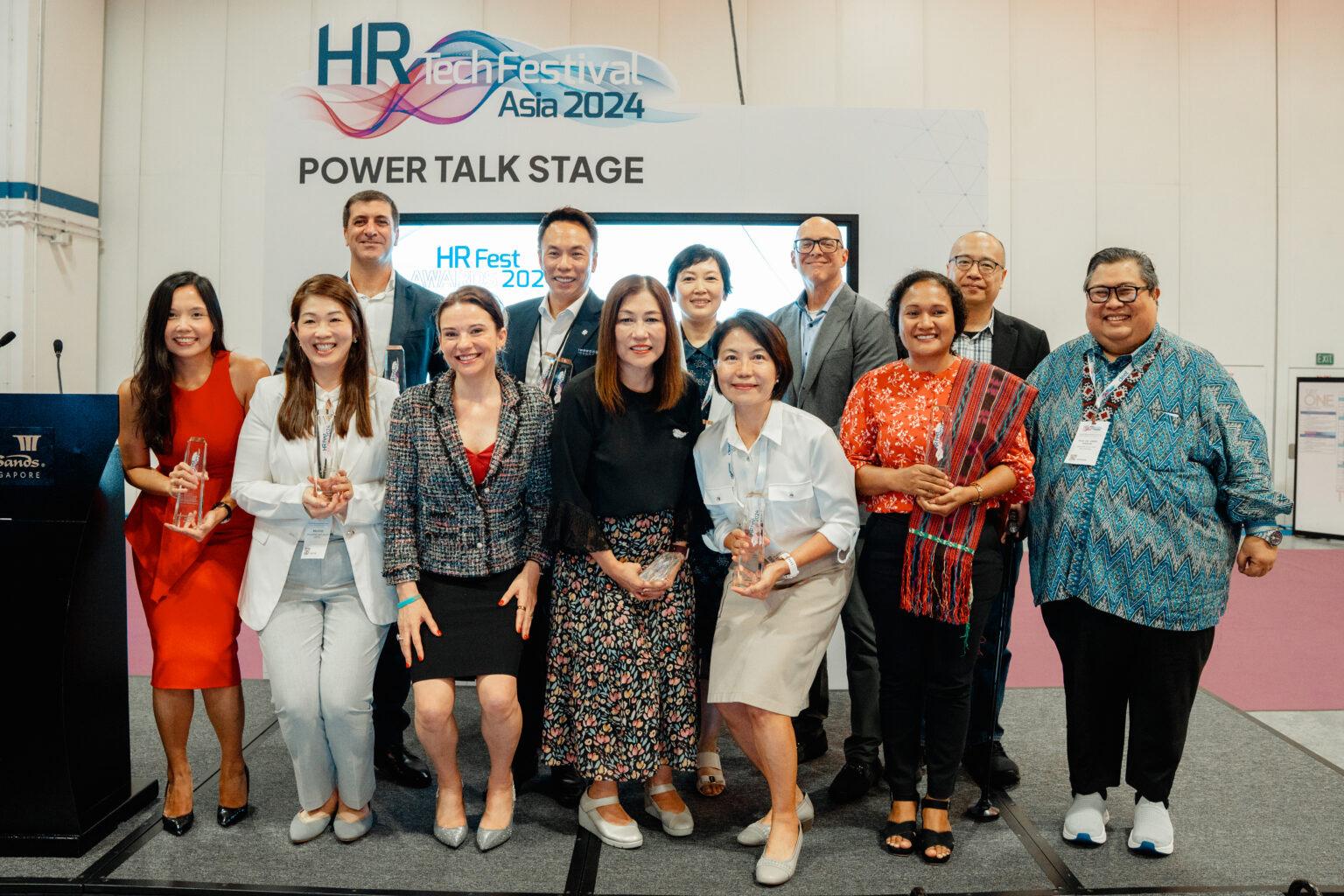










Learning and Education Technologies Asia 2024 focuses on how L&D can be the driver of organisational transformation through capability development, creation of values-based culture, talent attraction and management as well as employee motivation and engagement through over 13 content-packed conference sessions.
https://www.learningtechnologiesasia.com.sg/


HRM Magazine Asia readers,
As you are reading this issue of HRM Magazine Asia, the last quarter of 2024 is beginning to appear on the horizon.
For some employees, this is a time of trepidation and uncertainty as the dreaded annual performance review looms near. If you are feeling that way, it is likely that your organisation’s approach to performance management is an ineffective one.
Does your reporting manager neglect to provide any kind of feedback throughout the year, choosing instead to utilise a oncea-year exercise to focus on your weaknesses instead of celebrating your achievements?
Thankfully, such archaic management methods are increasingly being consigned to the dustbin.
Instead, forward-looking organisations are increasingly shifting towards a continuous and collaborative performance management approach that looks to motivate, rather than demotivate employees.
In this issue, we spoke with Marcela Esquivel, Vice-President People Experience (HR), Asia and Middle East, Sony Music Entertainment, on how one of the world’s largest music companies is reinventing performance management in a rapidly evolving world of work.
One theme shone throughout the interview: The focus on people, and Sony Music’s passion in supporting their development.
“Our objective is to empower our people to perform at their best by aligning their efforts with the organisation’s strategic objectives, thereby creating a positive and fulfilling work environment,” said Esquivel.
Organisations can do worse than taking
Read something you like? Or something you don’t? Perhaps there’s some insight we haven’t considered? Have your say on HRM Asia’s news, features, and contributions by emailing: info@hrmasia.com.sg
a leaf out of Sony Music’s book, where performance management is all about engaging employees, identifying their needs, and providing constant feedback to collaboratively achieve the strategic objectives of the organisation.
Continuing the focus on people, we also spoke to Bloomberg to better understand why organisations can no longer hide behind a wall of indifference when it comes to mental health.
With employee burnout out in Asia registering some of the higher levels globally, HR leaders must start to place mental health at the top of their agenda.
Neglecting employee wellbeing creates less engaged and productive employees, performances deteriorate, and in the long run, the organisation’s financial performance inadvertently takes a nosedive.
At Bloomberg, tackling mental health starts with normalising mental health awareness. This means shattering the stigma around mental health by creating awareness and a safe environment for employees to talk freely about their mental health challenges, without any fear of repercussions.
As 2024 draws to a close, it is perhaps worth considering how these strategies can be integrated into your own practices to create a work environment that not only enhances performance but also ensures the long-term wellbeing of your people.
Enjoy the issue!
SHAWN LIEW, Head of Content Development, HRM Asia

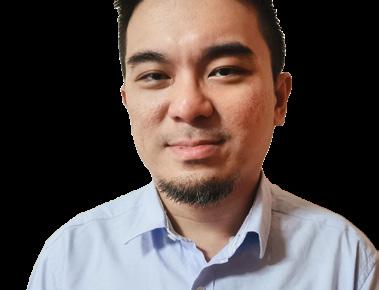
Shawn Liew Head of Content Development shawn.liew@hrmasia.com.sg


8
REIMAGINING PERFORMANCE MANAGEMENT: SONY MUSIC’S APPROACH TO FOSTER COLLABORATIVE GROWTH
Marcela Esquivel, Vice-President People Experience (HR), Asia and Middle East, Sony Music Entertainment, discusses how the organisation is evolving performance management with continuous feedback and the new People Performance Tool, aiming to align employee goals with strategic objectives.

10 BRIDGING ASIA’S SKILLS GAP WITH KNOLSKAPE’S AI-DRIVEN EXPERIENTIAL LEARNING
Navigating the diverse and rapidly evolving business landscape of Asia and South-East Asia demands innovative, localised learning solutions, and KNOLSKAPE is leading the charge in making organisations future ready.
12 CHRO SINGAPORE TO TACKLE FLEXIBLE WORK AND WORKFORCE CHALLENGES
As Singapore’s new flexible work arrangements guidelines prompt organisations to rethink their strategies, HR leaders will gather at CHRO Singapore to explore FWAs, mental health, and AI’s role in shaping the future of work.
14 MENTAL HEALTH MATTERS – IT’S TIME TO NORMALISE MENTAL HEALTH AWARENESS
Bloomberg’s Sian Hooper and Kelvin Cen discuss their proactive strategies to enhance mental health support and normalise workplace wellbeing amidst evolving challenges.
16 FROM RESILIENCE TO GROWTH: STRATEGIC PRIORITIES FOR CHROS IN ASIA
As Asia grapples with global uncertainties and evolving workplace dynamics, The Conference Board highlights how CHROs must innovate in driving business growth, talent development, and meaningful employee experiences.
18 REIGNITING YOUR ORGANISATION’S CREATIVITY WITH THE POWER OF LEADING BY DESIGN
Ruth Gellert-Neale, Chief People Officer, Technology, APAC and EMEA, JLL, explores how “leading by design” and design thinking can transform HR practices and drive organisational success.
20 FLEXIBLE WORK ARRANGEMENTS – TO DO MORE OR NOT TO DO
SBS Transit, under the leadership of CHRO Don Leow, is striving to boost inclusivity and adaptability while addressing workforce challenges and enhancing employee options.
info@hrmasia.com.sg
22 UPSKILL OR OUTSMART: TRANSFORMING ORGANISATIONS AT LEARNING & EDUCATION TECHNOLOGIES ASIA 2024
Learning & Education Technologies Asia 2024, to be hosted by HRM Asia on October 16, will unite over 200 L&D experts to explore transformative learning strategies for organisational excellence.
23 TECHNOLOGY AND THE FUTURE OF L&D
As technology advances at lightning speed, upskilling and reskilling become crucial. Dr CJ Meadows, Director, i2e –The Innovation & Entrepreneurship Centre, S P Jain School of Global Management, explores how to blend digital human skills effectively in today’s evolving workforce.
With over 20 years in HR, Sanjoy Shaw, HR Head, Asia-Pacific, Fragrance & Beauty Division, Givaudan, shares his insights on evolving HR roles, challenges, and his passion for cultivating a high-performance culture.
26 AI IN HR – CAULIFLOWER OR BERRIES? QUESTIONS ABOUT AI AT DHL GROUP
As AI reshapes HR at DHL Group, Shreya Ruikar and Meredith Wellard explore how AI’s rapid evolution can enhance employee experience, streamline tasks, and drive personal growth.
28 READERS’ CHOICE AWARDS 2024: A BEACON OF HR EXCELLENCE
HRM Asia Readers’ Choice Awards 2024, happening on December 4 at VOCO Orchard Hotel, will honour exceptional HR innovations and industry leaders across over 30 categories.
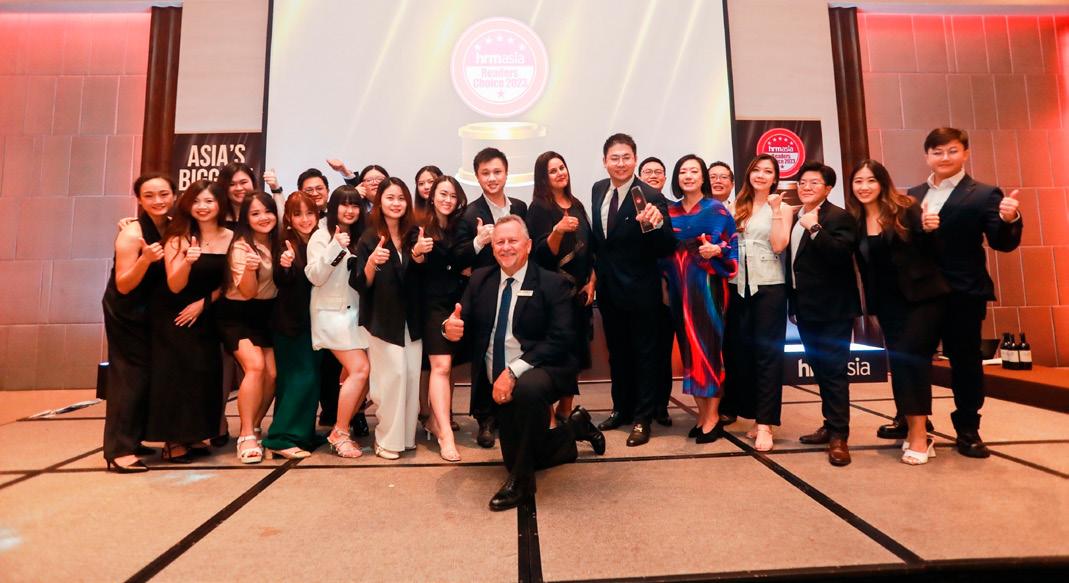

30 CODA’S RECIPE FOR A THRIVING CULTURE: A BLEND OF INCLUSION, GROWTH, AND WELLBEING
At Coda, a thriving workplace culture drives success in digital payments, with Senior Vice-President of People Linda Lee championing initiatives that enhance employee wellbeing, recognition, and collaboration.
32 BEYOND THE PARCEL: A CULTURAL EVOLUTION DRIVES SINGPOST’S DIGITAL SUCCESS
While many focus solely on digital innovation, Singapore Post prioritises its workforce by integrating employee wellbeing and upskilling into its digital transformation strategy, as detailed by its Group Chief People Officer Sehr Ahmed.
34 IT’S ALL ABOUT THE PERFORMANCE –WHAT’S YOUR GO-TO APPROACH TO MANAGING IT EFFECTIVELY?
Discover how HR leaders are leveraging continuous feedback and coaching to drive performance and align team growth with organisational goals, as revealed in our HRM Asia’s LinkedIn poll.
35 TOP FIVE WAYS HR CAN HELP BUILD PURPOSEFUL WORKPLACES
Creating purposeful workplace boosts employee engagement and wellbeing; Sandrine Provoost, CEO of Vertical Breakthrough, outlines five HR strategies to align leadership and culture with organisational purpose.
SINGAPORE’S WORKFORCE is mired in a persistent burnout crisis, according to Employment Hero’s 2024 Wellness at Work Report. Despite growing awareness, 61% of employees still feel burnt out, with Gen Z hardest hit at 68%. The study revealed a critical lack of workplace wellness support, with only 45% of employees having access to confidential counselling.
Employers are urged to prioritise mental health initiatives to address this pressing issue and create a healthier workforce. Stress levels are also concerning, with nearly 40% of employees reporting stress multiple times a week.
THE PHILIPPINES
A LABOUR LEADER IN THE PHILIPPINES has spoken out against the Senate’s plan to reduce public holidays, citing the benefits of official holidays for employees and the economy. Leody de Guzman argued that holidays increase productivity, allow employees to spend more time with their families, and boost local tourism. He also noted that employees are entitled to double pay on regular holidays, which can lead to increased overtime work and additional income.
Senate President Francis Escudero has clarified that the Senate aims to limit the passage of new holiday bills, not eliminate existing ones, to improve the country’s competitiveness. However, De Guzman countered that reducing holidays is not the solution, and instead, the government should focus on reducing commodity costs, combating corruption, and addressing other issues that affect businesses and the economy.

SOUTH KOREA SAW ITS FIRST MONTHLY INCREASE of over 100,000 jobs in three months in July, with employment rising by 172,000 year-on-year to a total of 28.86 million. This rebound follows job additions of 96,000 in June and 80,000 in May. The growth was driven mainly by increases in positions for senior citizens, with jobs for those aged 60 and older up by 278,000. However, the construction sector faced its largest job decline in 11 years, shedding 81,000 positions, while the manufacturing sector lost 11,000 jobs. Job losses also affected young employees and those in their 40s. The overall employment rate for people aged 15-64 rose to 69.8%, and the jobless rate fell to 2.5%.
JAPAN
THE MALAYSIAN TRADES UNION CONGRESS (MTUC) is calling for a swift increase in the minimum wage, arguing that the current RM1,500 (US$338.70) is insufficient, especially in urban areas. The union cited rising living costs and inflation as reasons for the urgent review. While the government is considering a change, MTUC stressed the need for regular adjustments to ensure employees’ livelihoods keep pace with economic conditions.
AS OF 1 OCTOBER 2023, 30% of male corporate employees in Japan who recently became fathers took childcare leave, marking a record high. This surge follows new government regulations requiring organisations to confirm employees’ leave intentions, according to a government report.
The rise, a 13-point increase from the previous year, is attributed to government efforts initiated in spring 2022 to promote paternity leave awareness. Uptake rates varied by industry, with personal services and amusement services leading at 55.3%, while real estate and goods rental services had the lowest at 16.9%. Maternity leave uptake remained steady at 84.1%.
DESPITE HIGH AMBITION among female employees in India, persistent bias and discrimination hinder their career growth. Aon’s 2024 Voice of Women Study India revealed that 90% of women in corporate roles are eager to work extra hours, take on challenging projects, and upskill for career advancement. However, 42% report facing workplace bias, and 37% have encountered insensitive behaviour. Working mothers face additional challenges, with 75% experiencing career setbacks after maternity leave and nearly 40% seeing negative impacts on pay and job roles.
Nitin Sethi, CEO of Talent Solutions in India for Aon, emphasised the need for CEOs to lead efforts in addressing systemic bias and promoting inclusive work cultures. The study also highlighted that women in leadership roles positively influence female employees, with 53% of women feeling more confident about their careers when they see female leaders in their organisation.
GERMANY IS GRAPPLING with a shrinking workforce and has unveiled plans to encourage overtime and later retirement. But experts said the real solution lies in tapping into its female talent pool.
Despite high female labour participation, many women in Germany work part-time due to tax disincentives and childcare shortages. Cultural norms also play a role in keeping women out of the full-time workforce. While the government has announced childcare investments, critics argued that deeper reforms are needed to address the root causes of the problem and fully utilise Germany’s female labour potential.
A REPORT FROM GLOBAL CITIZEN SOLUTIONS has ranked the best countries for digital nomads, with Spain taking the top spot. The report evaluated 65 countries across five categories, including visa costs, quality of life, economics, and technology. Spain excelled due to its new startup law, zero taxation on foreign income, affordability, and ideal environment for technology and innovation.
The report highlighted Europe’s dominance, with nine of the top 10 countries located there. The Netherlands and Norway follow Spain, offering high living standards but with higher costs. Estonia and Romania stand out for their affordability and tech investments. Canada is the sole non-European top 10 entry, ranked eighth.
THE UK’S UNEMPLOYMENT RATE has dropped to 4.2% in the three months leading up to June, a slight decrease from the previous quarter’s 4.4%.
Despite this positive news, the Office for National Statistics (ONS) suggested that wage growth is slowing down, with an annual rate of 5.4%, the weakest in around two years.
Liz McKeown, Director of Economic Statistics at the ONS, warned that the jobs market is “cooling” due to high numbers of vacancies, redundancies, and people not actively seeking work. Chancellor Rachel Reeves further acknowledged that there is “more to do” in supporting people into employment and promises to address this in her Budget later this year.
CHILE AND TURKEY HAVE JOINED the Equal Pay International Coalition (EPIC), bringing the total number of government members to 27. The announcement came during a G20 meeting in Brazil, where countries discussed strategies to close the gender pay gap. Spain and Japan also pledged increased efforts to achieve pay equity. The coalition aims to support governments, employers, and employees in eliminating pay disparities and achieving equal pay for women and men.
TEENAGERS IN THE US ARE THRIVING in the current job market, with many earning higher wages and benefits. According to Gusto, a payroll platform, the typical wage for a newly hired teen employee is US$15.68 per hour, up 36% from 2019. Teens are also receiving additional benefits, such as tuition reimbursement, mental health support, and gym memberships.
Employers in the US are wooing teens with these perks to attract and retain young employees. While some small organisations struggle to keep up with the increasing labour costs, many are finding ways to adapt and offer competitive benefits. As a result, teens are flocking to the workforce, with nearly 40% of teens employed, the highest share since 2009. Experts predicted that teens would continue to find good job opportunities as long as the job market remains hot.
A STUDY BY THE UNIVERSITÉ DE MONTRÉAL warned that while remote work offers flexibility, it may increase employees’ intentions to leave their jobs due to feelings of isolation and work-life conflict. Conducted by Professors Victor Haines and Alain Marchand, the study examined over 1,500 Quebec employees and found that while flexible work arrangements can enhance job satisfaction by increasing control and autonomy, telework does not significantly improve feelings of support from colleagues. Instead, it can exacerbate work-family conflicts, pushing some employees to seek new opportunities. Haines emphasised that telework carries more risks compared to flexible hours, highlighting the complex impact of remote work on employee retention.

BY SHAWN LIEW
For some employees, the culmination of a year’s of hard work, and the accompanying rewards or lack thereof, continues to be dependent on a singular and one-off event called the annual performance review. Having served as a critical component of an effective employee performance management programme for many years, is the annual performance review nevertheless beginning to lose its relevance in today’s rapidly evolving workplace?
Detractors point to annual performance reviews offering limited engagement because of their infrequency and the delayed feedback that managers provide. Employees also feel stressed and anxious, because many reviews tend to focus on weaknesses instead of celebrating achievements.
To alleviate these setbacks, forward-looking organisations are increasingly shifting towards a continuous performance management approach that looks to motivate, rather than demotivate employees.
“Our objective is to empower our people to perform at their best by aligning their efforts with the organisation’s strategic objectives, thereby creating a positive and fulfilling work environment.”
MARCELA ESQUIVEL, VICE-PRESIDENT PEOPLE EXPERIENCE (HR), ASIA AND MIDDLE EAST, SONY MUSIC ENTERTAINMENT.
At Sony Music Entertainment for instance, performance management is defined as an ongoing and collaborative process between managers and their people, said Marcela Esquivel, VicePresident People Experience (HR), Asia and Middle East, Sony Music Entertainment.
Speaking to HRM Magazine Asia, she explained, “We always put our artists first and that has always been the core of what we do, hence, that mindset starts with us. This process emphasises regular communication to review goals, expectations, and development plans.”
“Our objective is to empower our people to perform at their best by aligning their efforts with the organisation’s strategic objectives, thereby creating a positive and fulfilling work environment.”
To further enhance this approach, Sony Music launched their Global People Promise initiative, which is designed to shape the future by fostering powerful new ideas at the intersection of music, technology, and culture.
It also includes a set of core values and behaviours that are fully integrated into Sony Music’s performance management process. Specifically, the values of Creator First, Fuel Excellence, Elevate Each Other, Imagine More, and Act Responsibly, serve as guiding principles to achieve the goals of employees across all markets.
“By incorporating these values into our performance management strategies, we ensure that every employee prioritise the work that matters most and champion positive change that reinforces a strong sense of purpose and accountability within our teams,” said Esquivel.
If it’s
With innovation and creativity being key buzzwords to ensure business continuity and growth, organisations have been compelled to move away from practices that have seen their relevance wane in recent years.
Where performance reviews are concerned, however, it is an opportunity to reimagine the traditional performance management process through innovative tools and more agile practices that help organisations strike a better balance between reflecting on past performance and identifying areas to foster future growth. Sony Music, for instance, recently launched their in-house People Performance Tool..
Esquivel described, “The People Performance Tool promotes a culture of continuous feedback, engaging both our people and managers to focus on key priorities through real-time feedback on goals (the WHATs), the behaviours (the HOWs), and clarity in development plans and career paths.”
“Open communication is key, making feedback a regular part of our culture to build transparency and trust across the organisation,” she added.
At Sony Music, clear objectives and KPIs are defined to align

individual goals with company objectives. This reinforces the importance of values and behaviours, providing ongoing feedback from managers and different stakeholders, and creating tailored development plans for short, mid, and long-term career growth.
“While these steps might seem standard, embracing each with agility and a strong ownership mindset is crucial for evolving our business and meeting future challenges effectively,” said Esquivel.
The foundations of Sony Music’s approach to performance management are also supported by several key assessment pillars established by the new People Performance Tool.
• Goal setting: This is the first step where leaders cascade their own goals, discuss expectations with employees, and guarantee objectives are defined in an achievable and measurable way.
• Ongoing feedback and coaching: Ensuring continous feedback and coaching helps to improve employees professionally and personally, celebrate their successes and encourage them to discuss their career plans and development.
• Skills assessment: This analyses and addresses development needs in areas such as functional, leadership, and behavioural.
• Capability building: Fostering a better understanding of any organisational capabilities gap empowers Sony Music to build a platform to construct a talent pipeline for the future.
• People commitment: A people-focus remains paramount, and Sony Music is committed to enabling their people, collaboratively cultivating a unique organisational culture for all.
Like many other HR and business functions, performance management is being inexorably transformed by technology.
Sony Music, like almost every other organisation, is leveraging on technology to elevate their performance management approach. The People Performance Tool automates processes, offering features like a performance goal tracker, scorecards that visualise team progress, and insights to identify strengths, skill gaps, and future performance trends.
It also provides continuous feedback loops through automated reminders and check-ins, ensuring that every employee stays aligned and informed throughout the process.
Esquivel highlighted, “Technology is essential across all phases of performance management, starting with automating the process to facilitate fact-based, meaningful conversations during regular feedback sessions. It enables real-time tracking of performance metrics, helping leaders make decisions in areas like development, recognition, and talent pipeline management.”
It is the convergence of technology and a focus on people, and most importantly, organisations’ commitment, that will drive the next evolution of performance management, where employees feel engaged, encouraged and empowered to grow together with their organsiation.
The business landscape in Asia and South-East Asia is marked by a unique blend of challenges and opportunities where diverse cultures, languages, and rapid technological changes converge. For organisations navigating this complex environment, staying ahead of the curve requires more than just traditional learning methods—it demands innovative, contextualised solutions that cater to the region’s specific needs.
KNOLSKAPE, a global leader in experiential learning, has been addressing these demands head-on, empowering organisations to become future-ready in a dynamic digital era.
Speaking with HRM Magazine Asia, Amandeep Singh Kohli, Chief Business Officer, Asia-Pacific, KNOLSKAPE, highlighted the challenges and opportunities presented by the region, and elaborated, “Organisations in Asia and South-East Asia face unique challenges, including diverse cultures and languages, which require training programmes to be highly contextualised.”
“A major challenge is the growing gap between technological evolution and the availability of relevant skills in the workforce. However, these challenges also present significant opportunities.”
The rise of a young, tech-savvy workforce in the region is a critical factor that KNOLSKAPE leverages. This demographic is increasingly open to innovative learning methods such as gamification and microlearning, which fosters a culture of continuous learning.
KNOLSKAPE’s immersive learning approach, combined with localised and culturally relevant content, ensures that training resonates deeply with participants, making it easier to retain and apply in real-life situations. This strategic approach enables organisations to bridge the skills gap and position themselves for success in a rapidly changing digital landscape.
At the heart of KNOLSKAPE’s strategy is the concept of a future-ready organisation. Kohli identified three
“We believe future-ready organisations are those who follow a continuous learning culture which embraces Futurisation, Personalisation, and Humanisation.”
AMANDEEP SINGH KOHLI, CHIEF BUSINESS OFFICER, ASIA-PACIFIC, KNOLSKAPE
core components that define such an organisation: Leadership Readiness, Digital Readiness, and Culture Readiness.
He explained, “Leadership Readiness means developing leaders who can navigate complex talent and business challenges. Digital Readiness involves building a digital-first workforce ready to take on future challenges, especially in the age of AI. Culture Readiness focuses on creating a sustainable organisational culture aligned with business strategy for enhanced performance and productivity.”
KNOLSKAPE’s experiential learning offerings go beyond traditional training by bridging the gap between theory and practice. The organisation’s simulationbased learning courses and bundles address core and contextual skills, enabling organisations to accelerate their journey towards future readiness. This approach is encapsulated in KNOLSKAPE’s Futurise-Personalise-Humanise (F-P-H) framework, emphasising the importance of contextualised skills in preparing employees for new roles and challenges.
In a world where personalisation is key to effective learning, KNOLSKAPE integrates AI technology to enhance its learning and development (L&D) programmes. Kohli underscored the importance of contextual personalisation, stating, “We believe future-ready organisations are those who follow a continuous learning culture that embraces Futurisation, Personalisation, and Humanisation.”
Generative AI-based customised aids and personalised talent intelligence augment KNOLSKAPE’s library of experiential courses and simulations. Additionally, its simulation-building

capability, Genie, enables the rapid development and scaling of custom simulations tailored to the specific L&D needs of any organisation.
KNOLSKAPE’s impact in the region is exemplified by its recent collaboration with The Malaysian Communications and Multimedia Commission (MCMC). The organisation sought to enhance leadership capabilities across two key areas: mindset change towards outward thinking and ecosystem thinking, and developing sustainable leaders with digital leadership capabilities.
To address these needs, KNOLSKAPE custom-designed the All-Star Development Programme, an immersive, simulationbased blended programme. The programme included an assessment of digital mindsets and behaviours, facilitator-led virtual workshops, simulation-driven application exercises, and knowledge checks to evaluate learning retention and recall.
With a presence in key Asian markets, including Singapore, India, and Malaysia, KNOLSKAPE is poised to continue transforming organisations into futureready powerhouses. Its diverse range of simulation courses and experiential journeys in areas such as culture, digital transformation, and leadership are trusted by some of the world’s leading brands, including Barclays, Chevron, and Schneider Electric. With a deep understanding of regional nuances and a commitment to continuous innovation, KNOLSKAPE is dedicated to helping organisations and leaders stay ahead in an increasingly competitive global landscape.

KNOLSKAPE’s award winning experiential simulation offerings provide a perfect blend of Technology and People Science to help organizations Futurize, Personalize, and Humanize their Work, Workforce, and Workplace.








In response to Singapore’s recent guidelines on flexible work arrangements (FWAs), organisations are reevaluating their strategies to boost productivity while prioritising employee wellbeing. To facilitate this transition, the Singapore edition of HRM Asia’s flagship CHRO Series will delve into the intricacies of FWAs and explore the transformative role of HR technology in shaping the future of work.
FWAs have emerged as a crucial element in the modern workplace. The Singapore government’s guidelines on FWAs provide a framework that encourages organisations to rethink their work models. These guidelines aim to help organisations enhance productivity while ensuring the wellbeing of their workforce.
At CHRO Singapore, industry leaders will discuss the strategies required to implement successful FWAs and the impact of these arrangements on both employers and employees.
One of the highlights of CHRO Singapore is the panel discussion titled Navigating the Multigenerational Workforce: The Impact of Gen Z and the Evolution of Today’s Workplace. This session will explore how different generations, from Baby Boomers to Gen Z, coexist in the workplace and the unique contributions of Gen Z to workplace culture.
Moderated by Go Ashokh Menon, Agile Coach and Change Advisor at One Synergy Global, the panel includes Don Leow, Chief HR Officer at SBS Transit; Gareth Poh, Regional Head of HR, C.H. Robinson; and Uday Burra, Head of People Experience Care for Nokia
The importance of mental health in the workplace cannot be overstated. The session Mental Health Matters – It’s Time to Normalise Mental Health Awareness will focus on how organisations can support employee wellbeing in today’s dynamic work environment. With speakers like Sian Hooper, Asia-Pacific HR Co-Head at Bloomberg, and Kelvin Cen, Head of

South-East Asia, Bloomberg, this session promises to offer practical insights into creating and nurturing a mentally healthy workforce.
As technology continues to reshape the workplace, integrating AI into FWAs offers significant benefits. The fireside chat Leveraging Technologies to Build a Foundation for The Next Evolution of Work will address the enhancements AI can bring to flexible work, the challenges of implementation, and strategies for leveraging AI to revolutionise work.
This discussion, moderated by Sandhya Karpe, Human Capital Centre Leader, Asia, The Conference Board, will feature panellists Ruth Gellert-Neale, Chief People Officer, Technology, APAC and EMEA, JLL; and Raunak Bhandari, Regional HR Business Partner, Data Centres, Asia-Pacific Markets, Google
Another critical session, Flexible Working Rights: Cultivating Fair Employment Practices in Singapore, will address
the legal obligations of employers and the rights of employees in flexible work environment. Iris Goh, Director Talent for Forvis Mazars in Singapore, will shed light on creating fair employment practices that eliminate discrimination and ensure fair compensation.
CHRO Singapore is more than just a series of discussions; it is a convergence of over 150 CHROs, offering high-level networking opportunities, sharing best practices, and gaining insights from renowned HR thought leaders.The event – proudly supported by BIPO, Optimal, Outsized, Unit4, Visier, Human Inc, and Skillsoft –aims to equip HR leaders with the knowledge and strategies needed to navigate the challenges of 2024 and beyond, retain top talent, and build a culture of belonging and equity.
CHRO Singapore will take place on 18 September 2024 at One Farrer Hotel. For more information or to register, click here.


Over 130 HR leaders ignited change at CHRO Malaysia on 10 July 2024. Get inspired by their experience and be part of the next CHRO event in Singapore. Register now!
It’s been a great experience - this is my second time attending, as I was here last year as well. The event is especially valuable for the opportunity to meet people, and the variety of panel discussions and speakers is really enriching.
Rachel Goh, Zone Head of Global Employer Branding Marketing, Nestlé
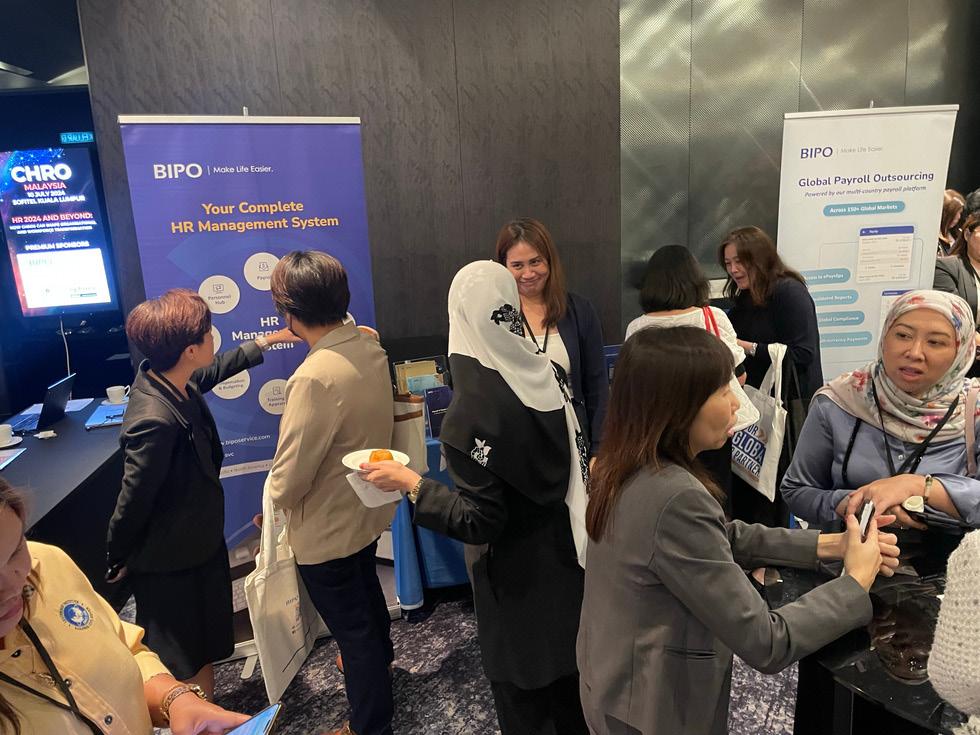
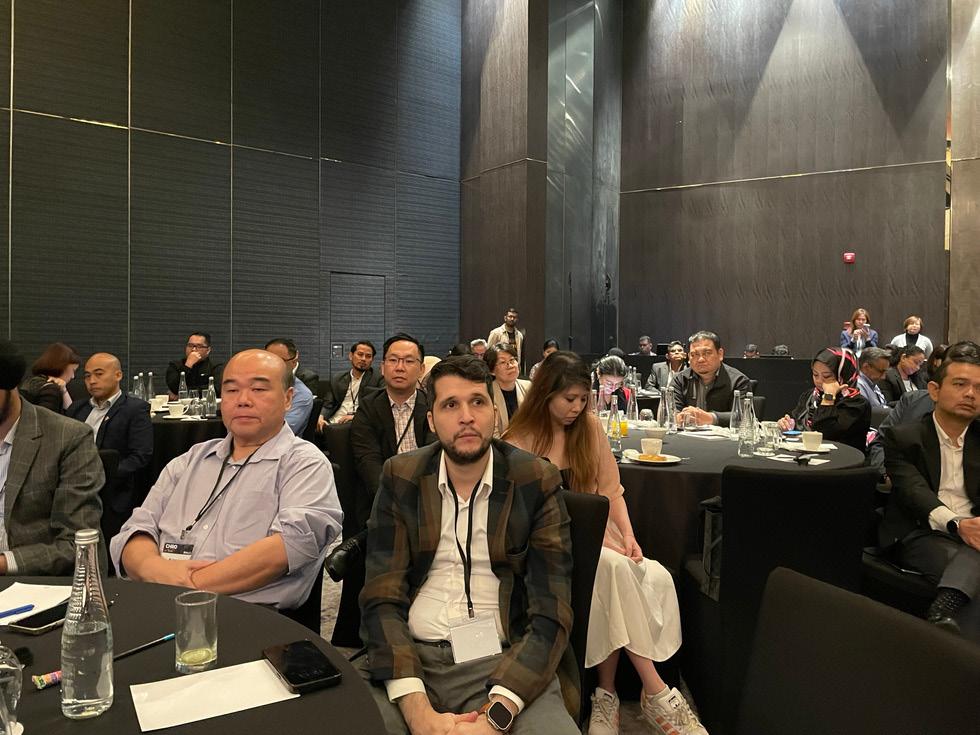
The selection of topics was spot-on, covering everything from broad strategies to individual assessments and learning. I especially appreciated the focus on wellbeing - it’s becoming almost mandatory, yet it’s an area where clarity is still lacking.
My key takeaway is that the landscape is constantly evolving, and we need to stay on top of these changes. Whether it’s AI, digital transformation, or other trends like recognition, it’s crucial for HR professionals to be aware of these shifts.
Dato’ Norashikin Ismail, Vice-President of Human Resources, Asia, Synthomer
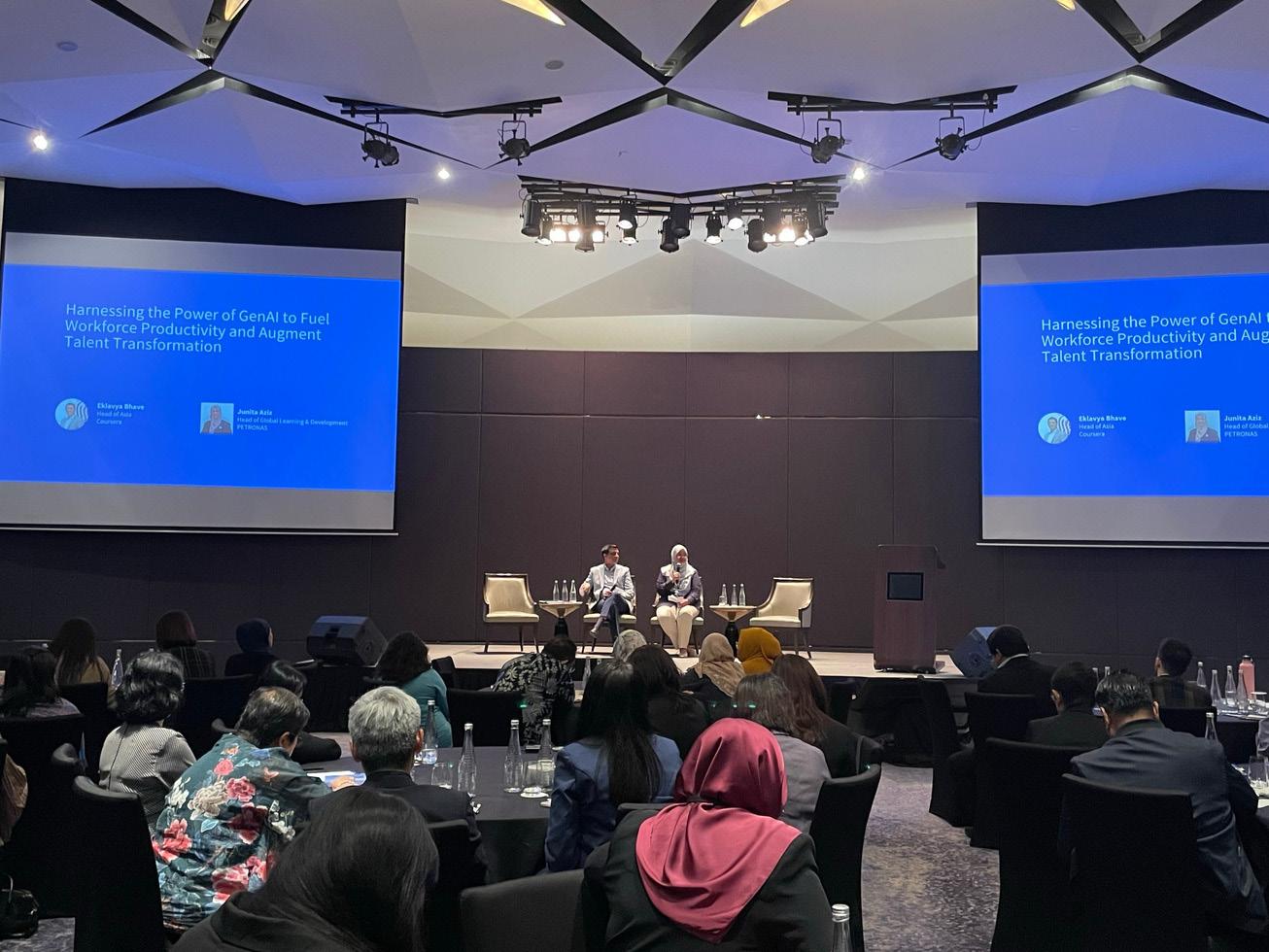
The evolving workplace continues to challenge organisations and leaders to pivot and innovate, particularly in how they support employee experience and wellbeing. In today’s operating climate, mental health is no longer an afterthought but should instead at the top of every HR leader’s agenda.
In this exclusive interview, Sian Hooper, APAC HR Co-Head, Bloomberg; and Kelvin Cen, Head of Southeast Asia, Bloomberg, shares with HRM Magazine Asia some of the key initiatives Bloomberg has put in place to empower employees to overcome mental health challenges in the workplace.
While more organisations are beginning to prioritise mental health in the workplace, well intentions may not always match up with actual execution. Can you share with us the initiatives Bloomberg has put in place to address employee mental health?
Sian Hooper: In response to the changing mental health needs of employees post-pandemic, Bloomberg has taken a proactive approach in how we address and support mental health. In our ways of working, we recognised our region takes on a relatively high volume of evening calls to collaborate with global teams, which can impact wellbeing. So, we have started redefining what global collaboration looks like – not to get rid of global calls altogether given the value they bring but encouraging teams to think strategically and introducing different collaboration tools, to reduce evening calls for our side of the world.
We also revisited our employee benefits programme post-pandemic to make sure our policy was meeting employees where

they were at. The Employee Assistance Portal (EAP), which is a short-term counselling and referral service, is traditionally offered online or across the phone. Acknowledging the different ways in which employees prefer to connect, we introduced on-site EAP sessions at some of our offices across APAC, to support those who benefit more from face-to-face interactions.
There is also the not inconsiderable challenge of overcoming the mental health stigma in Asia. How can organisations encourage an inclusive and transparent work culture that openly discusses mental health and
support for affected employees?
Sian Hooper: Whilst there is certain truth that the topic of mental health still holds stigma in many places across Asia, we are encouraged to see progress in numerous markets and are optimistic of positive change. One of Bloomberg’s initiatives that helped us simultaneously break down barriers on normalising mental health and build an inclusive work culture is the This is Me Asia (TiMA) campaign. Originally created in the UK, we partnered with Community Business to roll out TiMA across APAC. TiMA provides a platform for sharing personal stories from persons with disability or mental health conditions with the broader goal of normalising these
“Whilst there is certain truth that the topic of mental health still holds stigma in many places across Asia, we are encouraged to see progress in numerous markets and are optimistic of positive change.”
SIAN HOOPER, APAC HR CO-HEAD, BLOOMBERG

conversations in the workplace. Now in its third year, we continue to see positive ripple effects of its impact. Many of our leaders and employees who spoke openly about their experiences through TiMA have organically become mental health ambassadors and confidants for their teams and this has helped encourage open conversations across the company.
From a broader inclusion point of view, Bloomberg has also taken actionable steps to embed D&I into our operations and DNA. Inclusion is built into how we develop and evaluate our leaders. This includes offerings that provide learning on D&I fundamentals, forums for open dialogue amongst leaders on D&I topics and platforms to apply lessons learned. All this is to ensure it is at the forefront of how we nurture talent and hold leaders accountable.
We are big champions of empowering our employees to drive change both internally and in the communities they are a part of, from the bottom up. Our D&I Communities, or employee resource groups, are initiated and led by employees and are open to all, regardless of how one identifies. They are a core part of our culture, helping advance the interests and needs in the office location and creating an inclusive environment where all our employees can thrive.
With employees potentially unwilling to share their mental health problems due to a fear of reprisals, managers have an increasingly important role to play. What is Bloomberg doing to identify signs of mental health and provide better support for employees?
Sian Hooper: We know that leaders and colleagues play a significant role alongside HR in spotting and supporting mental health challenges. At Bloomberg, we offer Mental Health First Aider training, a programme that equips identified employees (not just leaders) in each office with skills to recognise common signs of mental health challenges, provide initial support and guide those in need towards appropriate professional help. Much like the fire warden on the office floor, these First Aiders are easily identifiable to encourage people to reach out in case of need.
We offer awareness sessions for all employees to make sure they have a foundational understanding of mental
“At Bloomberg, we have engaged all our different functions and levels across the firm because we are of the view that mental health awareness is not the responsibility of HR or any one team, but that of every single one of us.”
KELVIN CEN, HEAD OF SOUTHEAST ASIA, BLOOMBERG
health. For managers, we host closed-door mental health roundtables which provide an open space for them to discuss mental health challenges observed in their teams and provide them with the opportunity to seek advice, guidance and support from an external psychotherapist, HR, as well as their peers.
Kelvin Cen: One of the things at Bloomberg we value most is the trusted relationship between our business and HR business partners. Our HR leaders have a seat at the table with our business leaders and work hand in hand on matters across the business, including how they can together boost employee wellness to further drive productivity that contributes to the bottom line.
We have seen most impact through empowering and investing in our leaders, so they have the right tools to be role models and navigate mental health issues. Many of our senior leaders have taken our newer leaders under their wing to guide them on how to lead in a challenging market. Through role modelling, many of our new leaders have become more comfortable holding the ropes and having delicate conversations with their teams. We also observed another positive outcome – newer leaders are reverse mentoring senior leaders in demonstrating a different form of empathetic leadership through their ability to connect to and relate with their direct reports. It all comes down to this: when leaders embody empathy and create psychological safety for their teams, it trickles down to all levels of the organisation.
What strategies would you recommend for organisations to build a holistic approach to normalising mental health awareness?

Kelvin Cen: There is no one-size-fitsall in normalising mental health in the workplace. Each company is unique and would benefit from exploring different approaches, testing and refining their initiatives and continuously having open, honest two-way conversations with employees.
At Bloomberg, we have engaged all our different functions and levels across the firm because we are of the view that mental health awareness is not the responsibility of HR or any one team, but that of every single one of us. Fostering collaboration between our HR business partners and the business, building an inclusive culture, equipping our leaders with the tools and skills to create psychological safety, empowering our employees and D&I Communities and making mental health part of everyday conversations have together helped us move the dial in normalising this important topic in the workplace.
We have seen the fruits of incorporating both a top-down and bottom-up approach and building an inclusive culture for all. This ensures all voices are heard and no one is left behind.
There will always be more work to be done and feedback to take on board. We are cognisant this is a journey and are committed to partnering with the industry and broader community to build a more holistic and inclusive workplace for all.
To find out more about how organisations can go about navigating and normalising mental health in the workplace and create, maintain and nurture an engaged and healthy workforce for tomorrow, join Sian Hooper and Kelvin Cen at CHRO Singapore 2024, which is taking place on September 18.

Amid the global financial slowdown, conflicts in the Middle East and Ukraine, Sino-US-Europe tensions, upcoming elections, and climate change concerns, CHROs in Asia, are at the forefront of navigating an even more complex terrain. Its unique dynamics demand bold, innovative leadership and strategic foresight.
Based on our discussions with CHROs from multinationals and regional companies in Asia, we highlight in this article, three strategic priorities that will demand the attention of HR leaders in Asia in the coming months: HR as a catalyst for business growth and sustainability, the talent war and building future skills, and curating a meaningful employee experience.
HR as a catalyst for business growth and sustainability
CEOs increasingly recognise human capital as a strategic asset, elevating CHROs’ roles in driving business growth and sustainability. A recent global survey by The Conference Board underscores this shift, with CEOs reporting investment in human capital as their top internal priority for fueling long-term business growth. CHROs need to turn this strategic focus into tangible results by optimising talent acquisition, development, and retention strategies, while at the same time, managing costs effectively and deploying technologies such as artificial intelligence (AI), to boost productivity and drive innovation.
To help their organisations benefit from AI, CHROs must ensure that their talent has the necessary skills and training, create roles that boost AI expertise within the company and
develop reskilling strategies for positions that will likely be replaced by AI. Furthermore, CHROs can also pilot initiatives to implement AI in HR functions such as recruitment, learning and development, and career development.
As organisations navigate the complexities of a globalised and interconnected world, sustainability has emerged as a critical business imperative. CHROs will play a vital role in building a sustainable workforce by mitigating climate-related risks, ensuring ethical AI practices, and championing human rights within supply chains. By aligning human capital strategies with broader ESG goals, CHROs can contribute to building a more resilient and responsible organisation.
The convergence of human capital, technology, and sustainability underscores the transformative role of CHROs in driving business success. By effectively managing these elements, CHROs can position their organisations for long-term growth and impact.
The war for talent in Asia continues to rage on. As organisations grapple with talent shortages, CHROs and their teams will need to build a future-ready workforce that is equipped with the skills to navigate continuous change and disruption.
To address these challenges, organisations must shift from traditional hiring practices to a more holistic approach that prioritises skills over formal credentials. Internal mobility has emerged as a powerful tool in the talent war. By creating dynamic marketplaces that connect employee aspirations and skills with organisational needs, companies can foster a culture of internal career mobility. As a result, employees will feel empowered to own their career development. This will boost engagement and retention and align with business goals. Another approach to fill talent shortages is to leverage diverse and untapped talent pools such as retirees, women returnees, contingent/gig workers and neurodiverse and differently abled talent.
To build a future-ready workforce, organisations must invest in continuous learning and development. The integration of AI and automation requires upskilling and reskilling initiatives that equip employees with the competencies needed to thrive in this digital age. CHROs are crucial in driving initiatives such as digital literacy, data analytics, and accelerating AI-related competencies. They are responsible for fostering a culture of lifelong learning, providing continuous learning opportunities, and preparing employees for the future of work by developing skills such as adaptability, critical thinking, problem-solving, and collaboration.
Curating a meaningful employee experience
The evolving workplace, characterised by remote and hybrid work
“Over the last five years, the role of the CHRO has evolved significantly to a highly strategic one, requiring the ability to align people strategies with business objectives and impact.”
models, necessitates a renewed focus on enhancing the employee experience. CHROs must build inclusive cultures and ensure equitable career progression for all. Leveraging technology, such as employee wellbeing platforms, is crucial for offering personalised support and addressing mental health concerns.
Employee wellbeing continues to remain a pressing challenge in Asia, exacerbated by long working hours and hierarchical cultures. A comprehensive approach encompassing mental health support, flexible work arrangements, and work-life integration, is now a business imperative. CHROs must be proactive in preventing burnout and fostering a supportive work environment.
Central to ensuring a positive employee experience is a commitment to diversity, equity, and inclusion (DEI). Asia’s unique cultural and societal context requires a nuanced approach. Despite the DEI global rollbacks, organisations in Asia continue to forge ahead on their efforts by re-evaluating and adapting strategies to local realities. CHROs must prioritise wellbeing, fostering inclusion, and leveraging technology to create workplaces where employees thrive and contribute their best.
Over the last five years, the role of the CHRO has evolved significantly to a highly strategic one, requiring the ability to align people strategies with business objectives and impact.
Building a future-ready workforce requires a focus on talent acquisition, development, and retention, complemented by a robust learning culture. Creating a positive employee experience and fostering a commitment to wellbeing and inclusion are essential for driving organisational success.
Technology serves as a catalyst across all these aspects. From automating HR processes to enabling remote work to internal talent mobility and delivering personalised employee experiences, technology is reshaping the HR function.
The future of work in Asia demands agile, innovative, and datadriven HR leaders who can anticipate and respond to emerging challenges and opportunities.
Sandhya Karpe (first from left) is Human Capital Center Leader, Asia and Programme Director of Asia Diversity, Equity & Inclusion Council, Asia Human Resources Council, The Conference Board. She will be joining HRM Asia at CHRO Singapore 2024, which is taking place on September 18. Sandhya will be moderating a fireside chat that discusses how organisations can leverage technologies to build a foundation for the next evolution of work. Shreya Soota is Asia Human Capital Center Manager, The Conference Board. Praisy Abraham (first from right) is Asia Human Capital Center Member Engagement Associate, The Conference Board.

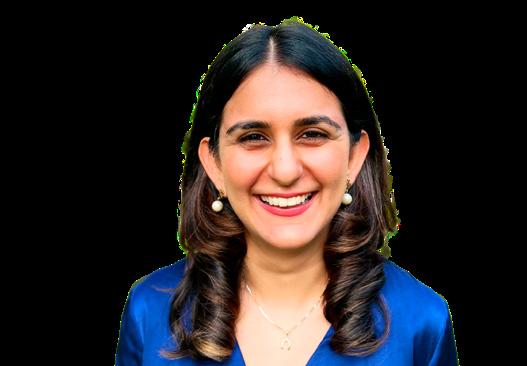

While technology continues to innovate and disrupt how change is navigated, many organisations are also looking for more innovative ways to adapt and thrive in today’s work environment.
I would argue that change is not new. The world has constantly been changing; the industrial revolution in the 1700s, for example, saw the world go from using horses and carts to having steam engines and factories. That was an era defined by unprecedented economic growth and change.
Like those who have gone before us, we are also in an era driven by disruptive change, where human resources (HR), business leaders and academics are called upon to embrace innovative approaches that drive organisational success. One such approach gaining traction is “leading by design,” which leverages design thinking principles to foster innovation and collaboration. In this article, we will delve into research, highlighting the impact of leading by design in organisations and how it can add value to HR and business practices.
Herbert A. Simon was the first to mention design as a way of thinking in his 1969 book, The Sciences of the Artificial. He then went on to contribute many ideas throughout the 1970s, which are now regarded as principles of design thinking, including the concept of prototyping. Simon was quoted as saying, “To understand them, the systems had to be constructed, and their behaviour observed.” In other words, to problem solve you need to have an element of creativity, emphasising empathy for stakeholders, problem definition, ideation and continuous iteration. By incorporating these principles HR leaders can cultivate a mindset focused on creativity, agility, and humancentricity, driving innovation, and enhancing the employee experience.
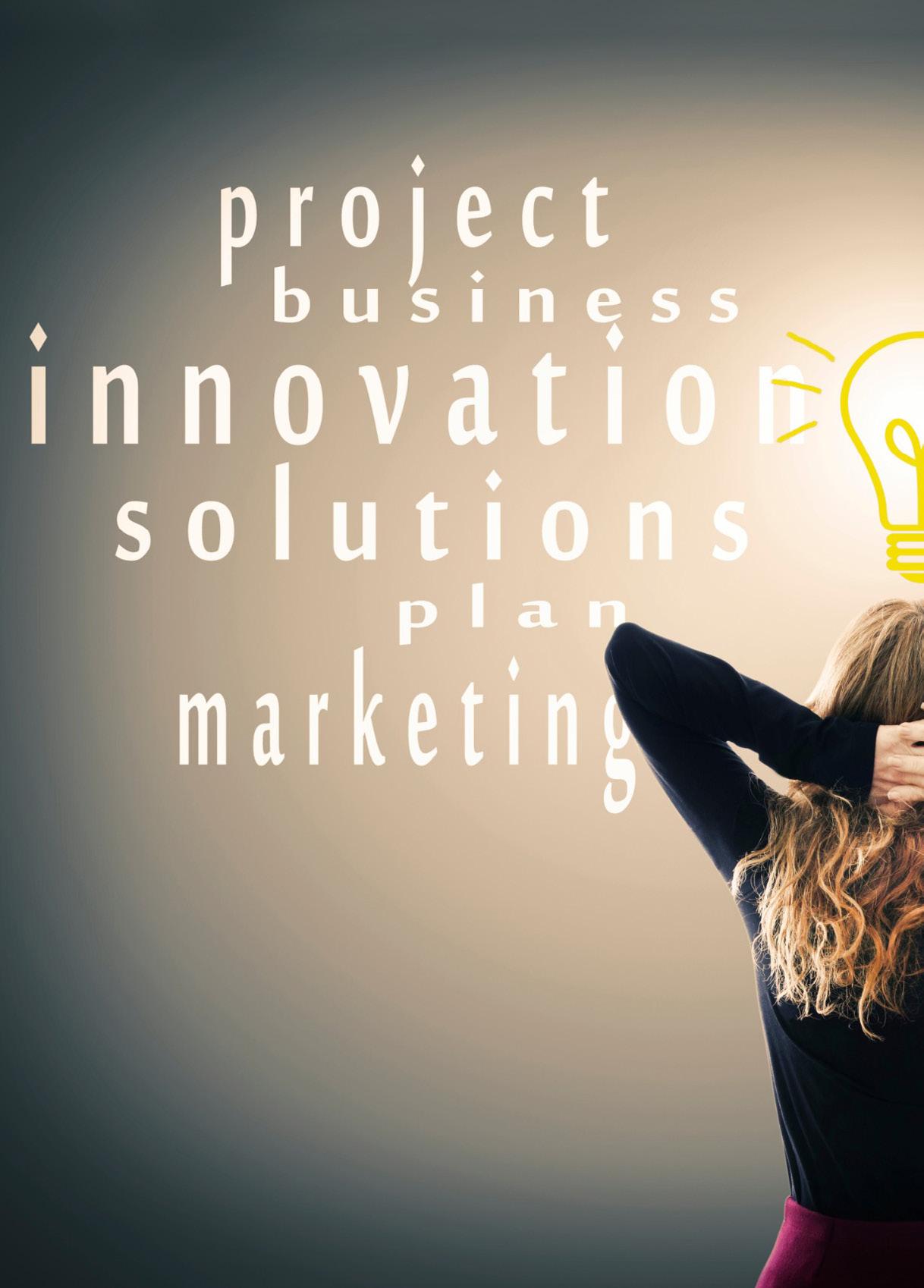
Unlocking success: The power of leading by design Studies have shown that design thinking can significantly boost innovation capabilities within an organisation and that those who embraced design thinking outperformed their peers on revenue growth and market share. As leaders, we need to think how we can harness the power of leading by design, what we need to do to encourage leading by design thinking, and how can we make it simple and practical to implement for our teams.2022 – being the first tech organisation in Australia to do so.”
Implementing new and experimental ways of working requires trust and belief from leaders that this can eventually have a positive impact on the bottom line. It can be a challenging task, but experience has shown that finding a curious and willing pilot group can yield long-term benefits. For the team involved, it is an opportunity to showcase their work to others in the organisation, while for the organisation itself, it offers a chance to test out innovative approaches. McKinsey’s “Five Fifty: Leading by Design” research reveals that companies that embrace this mindset achieved a remarkable 32% higher revenue growth over five years, compared to industry counterparts.
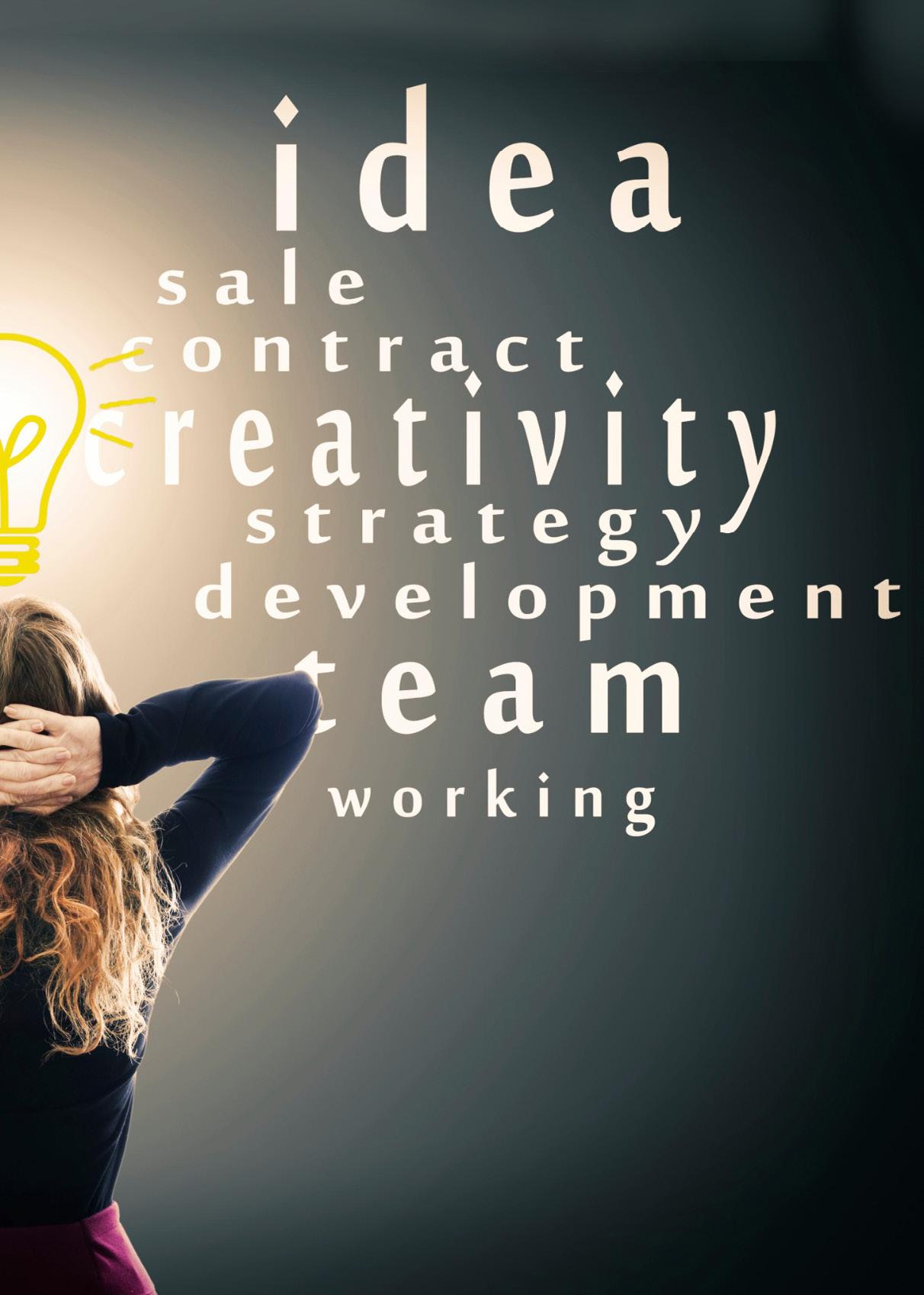
In conclusion, the adoption of leading by design principles in HR is reshaping talent management practices and driving innovation within organisations. By integrating design thinking into their approaches, HR leaders are transforming job roles, enhancing onboarding experiences, developing career pathways, and fostering inclusive workplace cultures. These efforts have a profound impact on attracting and retaining top talent, improving employee engagement, and enabling organisational success. As champions of change, HR leaders are propelling their organisations forward in today’s dynamic business landscape, creating an environment that thrives on innovation, collaboration, and growth. With design thinking at the forefront, the future of work is being shaped, ensuring organisations are poised for continued success.
Coaching leaders to embrace leading by design principles is a strategic and personalised process. It begins with educating leaders about design thinking and its benefits through workshops and real-world examples. A growth mindset is encouraged, emphasising continuous learning and experimentation. Leading by example, coaches model design thinking in their coaching approach. Collaboration and cross-functional engagement are prioritised
• Start small: Define a challenge that the organisation is facing and that has yet to be solved. Establish a cross-functional, crossgenerational and diverse team of individuals to work on it.
• Embrace experimenting: Try changing the location of where your team collaborate and encourage them to work outside or in locations they have not worked in before. “HR needs to create the conditions that drive creativity and collaboration, transforming the employee experience and unlocking innovation potential.” - McKinsey Design Insights. This has never been truer when it comes to implementing design thinking and leading by design principles.
• Walk the walk, not talk the talk: It is important that HR does not just talk the talk and not practice what it preaches. HR leaders play a vital role in promoting innovation and collaboration, which in turn shapes the employee experience, strengthens talent management practices, and enables crossfunctional collaboration. Now is the time for HR leaders to embrace this way of thinking and experiment and be the first to demonstrate its value and impact.
• Continuous learning: To encourage innovation and creativity, organisations need to embrace a culture of continuous learning where being curious is rewarded and recognised. A Harvard Business Review article discussed the impact of design thinking on organisational culture. The research found that organisations embracing design thinking fostered a culture of experimentation, risk-taking, and continuous learning, which led to increased innovation, employee engagement, and organisational agility. Organisations can consider giving employees four days a year for personal learning of their choice, encourage them to share what they have learnt with their teams and celebrate their successes.
• Business endorsement: It is critical to have the leadership team endorse leading by design principles, and they need to be seen as actively driving this culture of creativity and embracing fast failing.
to gather diverse perspectives and drive innovation. Leaders are guided in embracing an iterative approach, testing ideas and incorporating feedback. Measuring and celebrating success reinforce the value of leading by design. Through this coaching process, leaders become agents of change, driving innovation and success within their organisations. Let us be agents of change and lead by design to positively impact our organisation!
Ruth Gellert-Neale is Chief People Officer, Technology, APAC and EMEA, JLL. Join her at CHRO Singapore 2024 on 18 September at the One Farrer, where she will be part of the fireside chat titled, Leveraging Technologies to Build a Foundation for The Next Evolution of Work.


The recent announcement of the tripartite guidelines on flexible work arrangement (FWA) requests in Singapore has garnered generally positive responses from employees and employers alike. Detractors on either side of the camp, however, say it does not go far beyond or it puts employers on the defensive. Regardless, the guidelines are a step towards greater flexibility, which truth be told, already exists if we do not focus just on flexible location or working from home. Many employers provide some form of FWAs in terms of flexible load / time working arrangements; some more formalised than others.
In the government’s articulation of the rationale for the guidelines, it emphasised the twin impact of slowing resident
workforce growth and growing caregiving needs with an aging population, leading to more employees having to juggle work and care-giving responsibilities. More extensive adoption of FWAs will help caregivers manage their dual responsibilities and attract caregivers and seniors to return to or remain in the workforce. Some employers, of course, point to the nature of their work which does not avail itself easily to FWAs, and not just working from home per se. As a public transport operator (PTO), SBS Transit could have taken that stand and do the minimum to satisfy the intent of the guidelines. After all, the bulk of our workforce is needed either on the front line or the shop floor.
Our bus captains have to drive the buses, which today do not drive themselves, or at least not yet. Operations staff man our bus interchanges and rail stations. Engineering staff perform maintenance in workshops to keep our buses and trains in good condition. And while our Northeast and Downtown lines are fully automated, they still need customer service officers to look after

“We believe that FWAs can truly help create a more diverse workplace and workforce, and given that we support the public transport system, this will allow us to better provide safe, secure and reliable bus and rail services for everyone.”
With this, we hope to continue to attract locals and be able to offer the whole range of FWA options to them, including working from home. For operations staff, if we can man bus interchanges and rail stations remotely, either during some times of the day or certain days of the week, then the work can sometimes be done from home. For those in engineering roles taking on higher level work which involves data analytics, they can potentially work from home one to two days per week. The advent of electric buses, with rail systems already sophisticated in nature, will further support this future of work.
If what we envisage comes to pass, it will unlock greater diversity, equity and inclusivity in our workplace. As a company, we have a 3E (Employ, Empower and Educate) framework to recruit persons with disabilities (PwDs), in addition to supporting them indirectly by procuring goods and services from social enterprises and social service agencies which employ them. With more extensive FWAs from the continual push of the aforementioned transformation efforts, we will also be in a better position to take a higher number of PwDs, as more of the operations and engineering work can be done from home.
We are not just supportive of Forward SG’s and Enabling Masterplan 2030’s goal to create a more inclusive society for PwDs in Singapore. It is part and parcel of our workforce strategy to enhance inclusiveness in SBS Transit while building a more diversified pipeline of talent and manpower to support the public transport system.
Of course, doing more on the FWA front will also help us to attract more females to join the company and industry. With lower participation rate in the economy than their male counterparts, this resource pool is smaller but allowing for more options in flexible location / load / time will make our work more attractive to females, who also tend to be care-givers.
commuters, deal with incidents and take over the driving of the train during an emergency. But the fact is, these employees have access to a range of flexible load / time working arrangements today. Locals who become bus captains, for example, can choose to work part-time or 6 / 5 / 4-day workweeks and ask for permanent morning / afternoon shifts. They will soon have personalised work rosters which accommodate individual preferences based on one’s work-life needs. The only thing our bus captains cannot do is drive from home, but even that may be a possibility someday.
Our quest to do more than the minimum even before the guidelines were issued also stems from our responses to structural challenges like low birth rates and rising educational aspirations of locals, which means having to compete for a smaller but better qualified local manpower pool. To do that, we are reprofiling our manpower structure to elevate job roles so that our headcount requirements are lower, but our people undertake higher level work.
Today, we take in a large proportion of ITE graduates to support operations and engineering divisions across our bus and rail businesses. With rising educational aspirations, many of them will move on to become diploma or degree holders. In our transformation, we are redesigning the roles performed by ITE graduates to cater for diploma holders and above, with the base layer of work reduced or automated through greater use of technology and Gen AI.
Likewise, we hope to bring in more seniors into the industry since we are living longer and healthier, and some of them prefer to continue being productive than to stop working altogether. We are mindful that they may want a different tempo compared to their pre-retirement days, hence there are various part-time schemes (either working part of the day or part of the week) to meet the most varied of needs. For those who want to work fulltime, there are other FWA options they can consider. At the end of the day, FWAs ensure that PwDs, caregivers and seniors have equal opportunities in career options and advancement.
We believe that FWAs can truly help create a more diverse workplace and workforce, and given that we support the public transport system, this will allow us to better provide safe, secure and reliable bus and rail services for everyone. So, for SBS Transit, the answer is affirmative in that we want to do more than just the minimum in implementing the Tripartite Guidelines!
Don Leow is CHRO of SBS Transit Group. Join him at CHRO Singapore 2024 on September 18, where he will be part of a panel discussion that explores the dynamics of a multigenerational workforce.
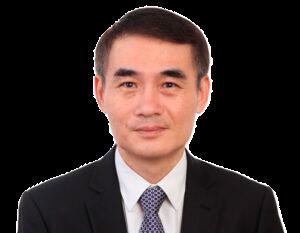
Learning and development (L&D) is no longer a mere function but a strategic imperative for organisations seeking to thrive in today’s complex landscape. This is the central theme at the upcoming Learning & Education Technologies Asia 2024, organised by HRM Asia.
Taking place on 16 October 2024 at Parkroyal on Beach Road, this event will bring together over 200 L&D professionals, organisations, and HR leaders to explore how L&D can drive organisational transformation.
The event will kick off with a highpowered HR Leaders Panel titled Curating Investments in L&D Programmes and Technologies to Develop Talent and Organisational Excellence. Esteemed panellists, including Jane Lai, Senior VicePresident, Talent and Development, Head of Group Capabilities Development and Reskilling, UOB; and Shailaja Sharma, Group Head, Learning, Development and DEIB, IHH Healthcare, will explore the essential pillars of a successful L&D strategy.
This session aims to provide attendees with actionable insights into transforming workplace learning by focusing on skills, capabilities, and competencies. Lai and Sharma will delve into aligning people, leadership, and business objectives, and discuss driving workforce agility and operational efficiency during the transition from role-based to skills-based frameworks.
Saurav Atri, Director of Global Learning at Manulife, will then present a compelling case study on Fostering a Culture of Agile Learning that Promotes Talent Growth and Measurable Business Impact. Atri’s session will emphasise the importance of a learning-focused approach to business and people management. Attendees will gain an understanding of how a robust learning culture can impact strategy, innovation, and employee engagement.
The session will also highlight the competitive advantages of agile learning in recruitment, retention, and performance,

providing a roadmap for organisations aiming to foster an agile learning environment.
Another notable session is a panel discussion titled From Cost to Value Centre: Winning Stakeholder Buy-In to Maximise Learning and Talent Enablement. Moderated by Sunil Puri, Senior Vice-President, Head of Research and Engagement, Stewardship Asia Centre, this panel features industry leaders such as Arthur Lam, Director, Head of Global Learning and Development, South Asia and Japan, Micron; David Hendrick Jr, Director, HR Capability Development, NHG Population Health Campus, National Healthcare Group; and Amor Villalon, Director and Head of Talent Management, Organisation Development, Learning and Development, FairPrice Group
The discussion will navigate the complexities of redesigning learning experiences to enhance employee productivity and performance. Key topics will include the cost and impact of ramp time and linking learning management system (LMS) investments to business outcomes, thus enabling smarter, bottom-line decisions.
Binesh Menon, Director, Learning and Organisational Development, AsiaPacific, Emerson, will address the Realities, Successes and Pitfalls of Scaling L&D and LMS Deployment. This session will explore the convergence of various learning technologies and their impact on effective learning design and delivery.
Menon will discuss the main considerations and inhibitors during L&D rollouts in resource-constrained periods, and the importance of harmonising HR, L&D, and organisational development teams to achieve a shared vision and goals.
Beyond the conference sessions, Learning & Education Technologies Asia 2024 will host interactive roundtable discussions that provide a platform for indepth conversation on specific topics. This will provide attendees with the opportunity to engage with experts on navigating tech skills transformation, executive coaching, and developing future-ready employability skills.
Learning & Education Technologies Asia 2024 is poised to be a pivotal event for HR and L&D professionals seeking to drive organisational transformation through innovative learning strategies. By participating in this one-day event, attendees will be equipped with the knowledge and tools to foster a values-based culture, attract and manage talent effectively, and enhance employee motivation and engagement.
As organisations navigate an increasingly complex landscape, the insights gained from Learning & Technologies Asia 2024 will be instrumental in maintaining a competitive advantage and achieving organisational excellence.
To find out more about Learning & Technologies Asia 2024, or to register, click here.
50% of all employees worldwide will need reskilling by 2025 due to adopting modern technology – B20
Do we really need upskilling and reskilling that soon? Yes.
We are adopting technology faster than ever, and we are learning to adapt more quickly, too. It took Netflix 3.5 years to reach one million users. Instagram? 2.5 months. ChatGPT? Five days. Threads? One hour.
With massive reskilling and upskilling needs, how are you supposed to deliver with the same budget? What budget extensions are likely to be approved?
Technology, of course.
But tech does not make change. It is only a tool. What kind of skills do you need to deliver?
Less than 30% of companies say they have the digital talent they need, and nearly 90% of executives believe “soft skills” are more important than ever -- and struggle to find talent with the right mix.
You will need to deliver both digital and human skills. Why?
Because 44% of working hours across industries will be impacted by artificial intelligence (AI), and every job will soon be decomposed into tasks that can be automated or augmented, requiring it to be reimagined for a new human + digital workforce coordinated by AI.
Once you map out the digital and human skills you will need, how can you deliver?
First, gaming and optional learning. That is right. When learning equips you to perform and succeed, people will pursue and engage. According to KPMG research on a client’s optional, gamified learning focused on company offerings, fees grew 25+%; client numbers increased 16%; new-client opportunities rose 25%; more use led to higher performance; and offices with more participation and leader learning grew revenues 16% to 19%, respectively. Also,

measure your learning ROI (as they did!)
Even if you do not gamify, microlearning combats the 40 – 80% online learning dropout rate with 10 – 15 times the learner engagement over video-learning. Gnowbe, for example, features immediately-applied microlearning in an online social setting with behavioral nudges and more.
With greater emphasis on “human” skills, we will see both increased psychometric assessments for individuals and teams, as well as bioreadings such as neuro, hormone, electrodermal, facial/eye/ body tracking, and more. Neuro-leadership studies show that using more of the brain for decision-making leads to better decisions, and GSR readings can help us sense human intuition. Not only can you take readings, but you can use them in the learning process.
When we are not interacting in-person, facilities like SPJ Global’s Engaged Learning Online studios can boost engagement with more realistic group settings, including simultaneous translation, full-body facilitator movement, eye contact with always-on videos, set screen positions every meeting, and other facilities that encourage relationship development and interaction.
Virtual reality (VR), metaverse, simulations, and visual wrap-around experience rooms also increase engagement
and allow learners to focus on what interests them, engage with people in other locations real-time and realistically, and engage in “doovers”, which any Olympic athlete will tell you is key to breakthrough skill development.
AI, GenAI, ChatGPT, and digital twins are, of course, the stars of the day, facilitating personalised learning pathways – and career pathways if you will allow them – personalised coaching, and in-the-workmoment learning, assuming your human workforce is fully integrated with a digital workforce. With commercially-available, small-language-model, closed AI systems like personal.ai, you can now easily make (by yourself!) digital trainers, coaches, supervisors, administrators, and more.
In short, technology can not only help us focus on human-appropriate work but can also help us become more human – or, rather, the humans we would like to be.
Caveat emptor: Before employing tech, I implore you to create a new model of the attributes and skills you will need from tomorrow’s workforce and explore new business models for learning that should decrease your costs and increase the business value you get from learning. (Yes, I have models to share).
How will you use tech to increase your workforce’s tech – and human – skills?
Dr CJ Meadows is Director, i2e – The Innovation & Entrepreneurship Centre – S P Jain School of Global Management. To talk to the author’s digital twin about your situation, just visit CJ2.personal.ai and click the “public chat” button. To learn more about the future of L&D, visit drcjmeadows.com/futureoflearning for the author’s upcoming book, Disrupting and Design Thinking the Future of Education (Routledge, available on Amazon), multimedia book The Future of Learning (Gnowbe), articles, and more.


With more than 20 years of experience, Sanjoy Shaw, HR Head - Asia Pacific, Fragrance & Beauty Division, Givaudan, is passionate about driving human elements for purpose-driven business growth and inspiring others to become better versions of themselves.
HRM Magazine Asia sat down with Sanjoy to talk about how the role of the CHRO has evolved and why he remains passionate about the role he can continue to play in building an inclusive and highperforming culture in his organisation.
Can you share with us your main roles and responsibilities as HR Head, Asia Pacific, F&B, Givaudan?
Sanjoy Shaw: Currently, I am the Head-HR Asia Pacific, Fragrance & Beauty Division, Givaudan. My role covers matured and developing markets within Asia for 13 key countries. As a HR Partner, I work closely with my highly capable APAC/Country Business Leaders for enabling growth by preparing the organisation and talent to be future ready with a robust talent management, engagement and building winning culture initiatives. I am also a member of the Global F&B HRLT & APAC F&B Business Leadership Team. APAC is a very diverse and dynamic market with strong future growth potential and this makes talent management in this market
very challenging and exciting for any HR professional.
With more than 20 years of experience in HR working for international brands such as Saint Gobain Glass, PepsiCo and now Givaudan, a global flavour and fragrance leader, how has the role of CHRO evolved in this period and what do you think are the key challenges facing HR leaders today?
Sanjoy Shaw: In terms of adding value to business, HR has evolved significantly in the last two decades from transactional
to strategic and transformative. It has strengthened its space from being general to highly specialised in many ways. As the work, workplace and workforce evolved significantly over time, especially after Covid, HR is now playing a critical role in bringing physical, human and digital aspects of talent management together and creating a competitive talent advantage for the industry to win sustainably.
The human elements, leadership, culture and digital aspects have come to the fore and HR is likely to play a much bigger role to champion these in the coming

decade. Over the last two decades, we have seen three major shifts: manual to highly automated HR processes for scale and efficiency; increased understanding of business by HR leaders to champion human aspects both locally and globally; and a lot more focus on building agility, flexibility, culture and wellbeing to create sustainable organisations for a multi-generational workforce.
Some of the key challenges facing HR leaders today are attracting and retaining top talents, managing hybrid work models, developing and maintaining high performance culture, upskilling and reskilling employees, promoting DEI and wellbeing in the workplace and using the right HR technologies for competitive advantage and workforce efficiency. Managing change and transformation more frequently than before is a new reality that requires HR leaders to be more adaptive, agile and relevant.
How would you describe the current culture of Givaudan and what are you currently looking to improve on?
Sanjoy Shaw: We have a very strong organisational culture with our culture DNA at the core. This is all about inspiring and challenging our people to strive for more and doing it with our hearts and souls. As part of our people pillar strategy, we are building an inclusive workplace where we all love to be and grow. In APAC F&B, we have started a journey of promoting five core values (Trust, Respect, Passion, Creativity and Humility) in various creative ways to educate our employees and encourage them to live these values day to day. This is assisting us in strengthening a high-performance culture and working together as one team. I believe these are key ingredients for our success and our leaders take strong ownership and are committed to lead by example.
What are you particularly passionate about and how does this manifest in the everyday running of Givaudan?
Sanjoy Shaw: I am very passionate about three things: Building an inclusive and highperformance culture, developing leaders for the future, and leveraging HR analytics/ technology to make a difference with speed and efficiency. These key goals and objectives give me something very exciting to look forward to everyday at work, offering
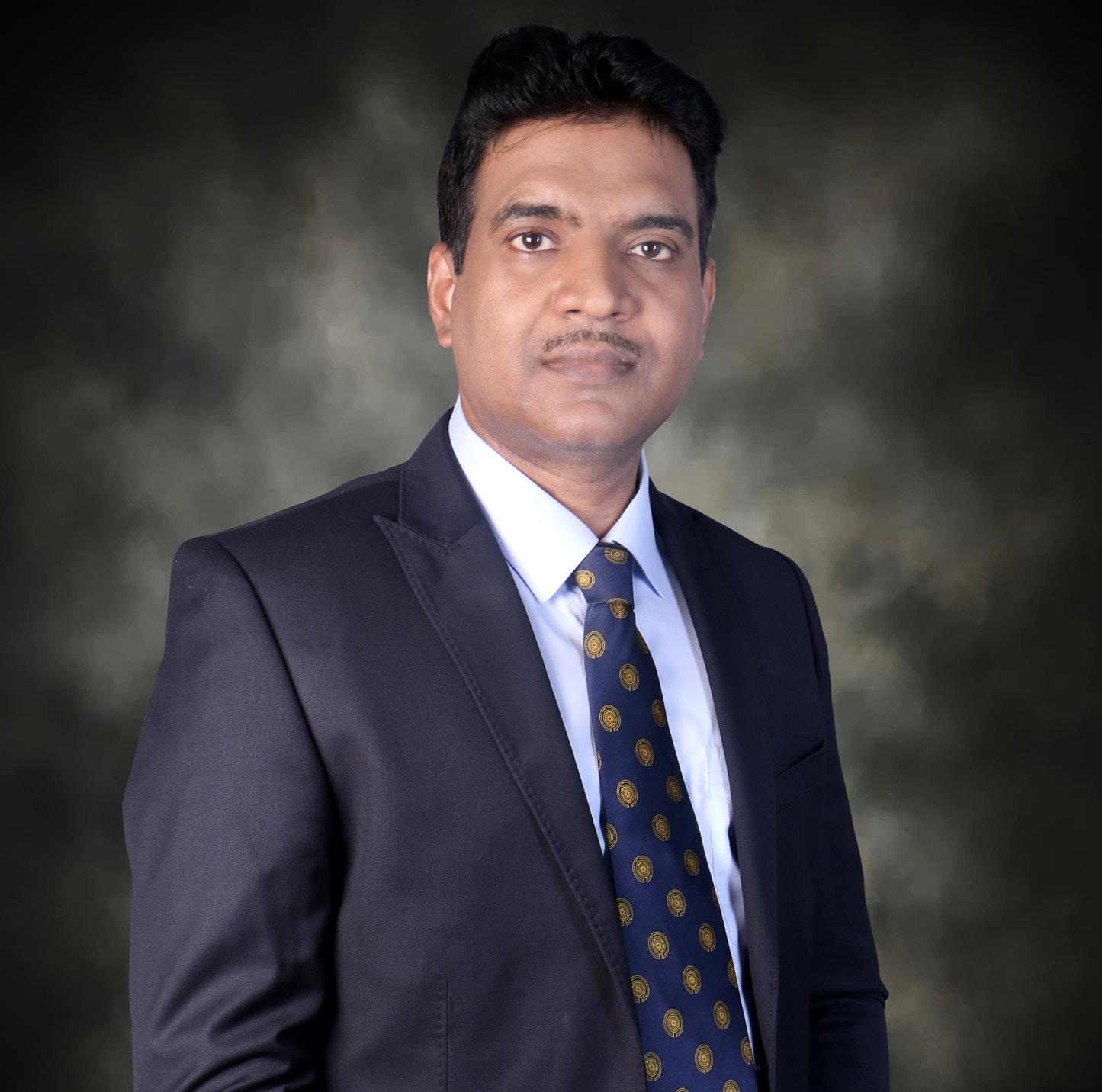
“I am very passionate about three things: Building an inclusive and high-performance culture, developing leaders for the future, and leveraging HR analytics/ technology to make a difference with speed and efficiency.”
SANJOY SHAW, HR HEAD, ASIA PACIFIC, F&B, GIVAUDAN
challenges and opportunities in my role to learn and keep trying to improve things. In my current role, these elements connect me to various strategic and immediate HR interventions and initiatives that we as one HR team drive together. We are constantly asking ourselves why we are doing what we are doing and how it helps the business and employees to move forward.
Away from work, what are your hobbies and what do you do to recharge your yourself?
Sanjoy Shaw: I love reading about HR trends and industry practices thorough various channels, including HRM Magazine Asia, and enjoy connecting with industry
colleagues to keep myself updated and relevant. I regularly go for jogging and swimming activities for my fitness. Traveling and exploring people, places, food and cultures keep me going and adds to my curiosity and my continuous learning. Reading leadership books adds to new perspectives in my life and motivates me to push myself out of comfort zones.
If you were to advise aspiring HR leaders on what it takes to be successful today in one sentence, what would that be?
Sanjoy Shaw: Love your job, know your business, and think about how you can add value through your work and stay relevant.
Introducing AI into HR landscape starts with two important questions: What specific areas do we want to focus on? And how will we bring AI to life – with cauliflower systems or berries? At DHL Group, we address the vast possibilities of AI in HR through solutions that consistently enhance people’s experience for approximately 594,000 employees.
AI has grown at a speed like never before. We went from selective AI-backed functionalities in various domains, to the launch of GPT-4 with improved large language model (LLM) capabilities, to multi-modal models that interact seamlessly between images, text, and audio – in a matter of few years. It is hard to comprehend where we will be in 12 months. Staying ahead of the curve means AI is no longer optional, it is a necessity.
Over the years, HR has been transforming from back-office to a strategic partner enabling business goals. AI will accelerate this transformation by automating mundane tasks and enhancing complex processes like curating learning. This transformation frees HR to focus on truly meaningful work, strategic planning and fostering employee engagement.
So, how can we tackle the vast expanse of HR functions and enhance them with AI?
At DHL Group, we enhance our function along three pillars:
1. Enhancing employee and candidate experience, improving engagement by leveraging various AI solutions
2. Augmenting HR-owned tasks, assisting HR professionals
3. Enable personal growth for all through AI enablement and upskilling
Enhancing employee and candidate experience, improving engagement:
With the conversational capabilities of LLMs, we can help employees in getting answers to HR questions such as pay slip clarifications. This improves the experience and enables
employees and managers to spend much less time looking for the right information, critical for an organisation across more than 220 countries in multiple languages.
“AI will be the missing key to bring true personalisation and tailored experience to the next level: this will leap a workforce towards higher engagement, and an organisation towards increased quality, productivity and success,” says our colleague, Ralph Wiechers, EVP People Experience, Technology and Data at DHL Group.
Consider the example of Rebecca, a data analyst who wants to move into project management. AI can curate a customised learning path to dive into project management skills like stakeholder management, risk, and budget management. It can also develop custom-designed course content for Rebecca’s skills and career aspirations, which means less waste on irrelevant content and time spent searching for the right learning. This concept can now be expanded to include the many moments across an employee lifecycle.
Many DHL leaders now acknowledge that AI is not a mere checkbox but requires a deliberate and strategic implementation. The key is to integrate AI into existing HR processes and iterate. We start with either time-consuming areas or where quality has been a challenge, like moments that matter. This helps boost engagement, or efficiency, or ideally both. For instance, recruiting teams create a lot of content such as job description, team information, social media posts, etc. AI tools can be used to develop text, tailored images, videos and reels for such content “on the fly”.
We believe that recruiting is a highly competitive activity targeted to dynamic markets. The faster we can bring candidates through our pipeline and the better experience we can give them, the more likely we are to hire and keep them. This means recruiters should be doing less manual admin and more high value engagement with candidates. From our point of view, AI not only
“In the past, the sheer administrative effort was just too cumbersome and expensive to manage whereas today, we can delight the employee with a simple click.”
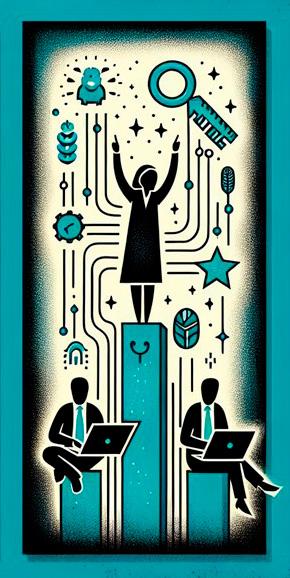
supports the scheduling, content writing, etc. but also automation of communication and engagement.
AI solutions must reside in tools where HR professionals “live” during work.
As these systems mature, they transition to an increased level of automation. Roles with repetitive tasks are challenging to hire and so essential to retain employees. It is a win-win with AI, as our people can focus on creative and cognitive tasks.
Enable personal growth for all through AI enablement and upskilling
Upskilling DHL Group’s vast network has been challenging due to the need to identify job-required skills and employees’ abilities.
Previously, developing and maintaining skills matrixes took months.
Today, we have introduced a dynamic skills marketplace powered by AI that ensures skills are visible, up-to-date and linked to learning suggestions, career paths and internal job recommendations. The reduction in administration and the increased relevance to the employees has been huge. Shortly, we will introduce mentor and coach opportunity matching, network matching and more – a gamechanger for people development. In the past, the sheer administrative effort was just too cumbersome and expensive to manage whereas today, we can delight the employee with a simple click.
Creating AI solutions is just the start. The real magic happens when the employees learn and apply these solutions to create real-world results. This can be through upskilling and reskilling programmes, leadership endorsement and adoption of these tools, and spreading the word via advocates.
Pinpointing where to deploy AI is only half the battle. The real test lies in how we implement them. Our global presence leads to a wide variety of HR systems. This brings us to the million-dollar question – once we spot our opportunity zones, what do we choose: cauliflower or berries? In other words: Should we have a central infrastructure for a consistent user experience (cauliflower) or implement independent systems (berries).
One emerging option in the tech HR landscape is to go the cauliflower route. Cauliflowers have a central stalk and individual florets. The stronger the stalk, the more the florets thrive. A common infrastructure can enable various solutions to strengthen the ecosystem and provide seamless employee experience, where possible. We need robust systems, like single sign-on, high availability, and clear data and user rights practices for this.
On the other hand, berries grow as individual plants and are not dependent on a central system. With this route, we do not build a central infrastructure to support the AI solutions. Each solution makes their own architecture decisions, possibly accelerating innovation. However, just as berries can grow wild, multiple different systems can bring long-term complexity and increased management overhead without streamlined solutions. Choosing this route would only incorporate systems that enhance user experience, clear architecture guidelines, and regular system reviews.
Likely, we will land at a place where both – cauliflower and berries – coexist. Cauliflowers will bring reliability and consistency such as reducing bias and aligning with company values. At the same time, our tech partners will bring their solutions (berries).
The capability we must strengthen as HR, is to consciously manage this development and tie it into the broader user experience, while managing complexity in the long term.
Shreya Ruikar is Head of AI Strategy, HR, DHL Group; and Meredith Wellard is Vice-President, Group Talent Acquisition, Learning and Growth, DHL Group.


Get ready to shine a spotlight on the best in HR innovation and excellence across Asia.
HRM Asia Readers’ Choice Awards 2024 returns on December 4 at VOCO Orchard Hotel in Singapore. This year’s event will celebrate industry-leading partners and solution providers who have made extraordinary contributions to the HR landscape.
From groundbreaking technology to exceptional talent strategies, the awards recognise the full spectrum of HR achievements. With over 30 categories, there is an award to celebrate every aspect of the HR function, from recruitment and onboarding to employee engagement and development.
Nominations for HRM Asia Readers’ Choice Awards 2024 are now open and will close on 13 September 2024. This is an excellent opportunity for organisations to showcase their achievements and secure their place as a leader in the HR
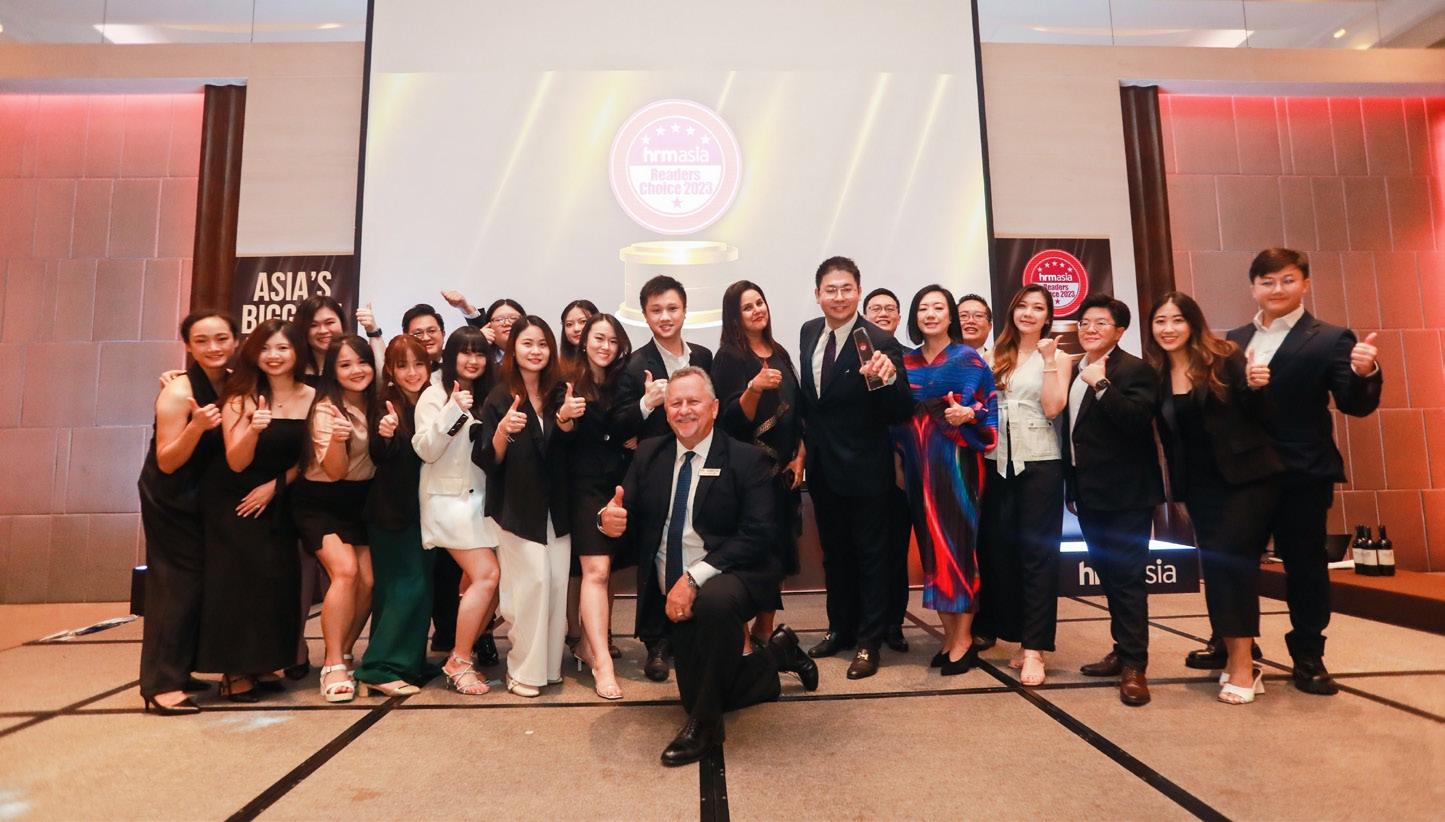
industry. You can also nominate your own organisation or others that you believe deserve recognition for their contributions to the HR field.
HRM Asia Readers’ Choice Awards 2024 stands as a testament to the evolving nature of HR practices and the dedication
The 2024 awards will cover an extensive range of categories, including:
Best HR Tech Solutions
• Best HR Tech – Payroll Solution
• Best HR Tech – Human Resource Information System
• Best HR Tech – Outsourcing Solution
• Best HR Tech – Time & Attendance Management System
• Best HR Tech – Cloud Solution
• Best HR Tech – Recruitment and Applicant Tracking System
• Best HR Tech – HR Data & Analytics Solutions
• Best HR Tech – Talent Management System
• Best HR Tech – Best Recruitment Platform Solution
• Best HR Tech – Employee Performance Management Solution
• Best HR Tech – Employee Engagement Solution
• Best HR Tech – Learning Management System
• Best HR Tech – AI Recruitment Software Provider
• Best HR Tech – Learning Experience Platform
• Best HR Tech – Employee Benefits Solution
• Best HR Tech – Employee Experience & Engagement Solution
• Best HR Tech – Employee Productivity Tracking Software
Best HR Service Providers
• Best Employer of Record (EOR) Service Provider
• Best Professional Employer Organisation (PEO) Service Provider
• Best Corporate – Learning & Development Provider
• Best Corporate – Training Provider
of professionals who drive innovation in the industry. As the event draws near, anticipation builds for an evening that will honour excellence and set the stage for the future of HR.
For more information and to submit your nominations, click here
• Best Corporate – Sales Training Provider
• Best Corporate – Leadership Development Provider
• Best Background Screening Provider
• Best Corporate Healthcare Group
• Best Corporate Healthcare/Wellness Solution Provider
• Best Rewards/C&B Solution
• Best Recruitment Firm – Engineering/IT Positions
• Best Recruitment Firm – Client Experience
• Best Recruitment Firm - Recruitment Process Outsourcing
• Best Workspace Innovation Solution
• Best Employer Branding Solutions Provider
Best Business Travel and Accommodation
• Best Corporate MICE Venue
• Best Serviced Apartment – By Property
• Best Business Hotel
Best Mobility and Relocation Solutions
• Best Mobility & Relocation Solutions
Non-Service Providers
• Best Organisational Deployment of HR Services/Technology Solution
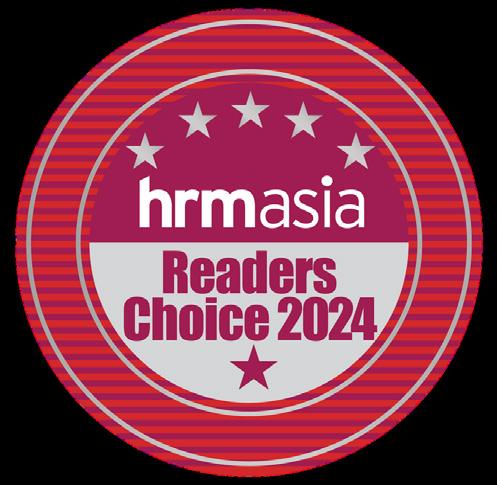



Organisational culture has emerged as the new competitive advantage, serving as the invisible force that shapes how employees feel, think, and act. As its impact becomes increasingly clear, it is evident that a strong culture is essential for driving business success.
Yet, cultivating a thriving workplace culture is a complex endeavour that requires careful attention and strategic planning, Organisations like Coda have recognised this and have made culture a cornerstone of their business strategy.
Founded in 2011, Coda has quickly become a leader in digital payments, with a particular emphasis on the gaming industry. Serving major clients such as Activision Blizzard, Electronic Arts, and Riot Games, Coda excels in connecting publishers to over 10 million paying customers worldwide. Its product lineup includes Codapay for seamless direct payments integration, Codashop for in-game content purchases, and xShop for e-commerce solutions.
Yet, behind the scenes of this success story is a strong, supportive culture nurtured by Linda Lee, Senior Vice-President of People at Coda.
At the core of Coda’s success is its dedication to fostering a positive and inclusive work environment, as Lee told HRM Magazine Asia, “At Coda, we place a premium on creating a positive work environment that supports our employee wellbeing.” This commitment is reflected in initiatives such as the organisation’s mental health support programmes, flexible work arrangements, and emphasis on open communication.
She emphasised the importance of recognition and celebration, stating, “We recognise the importance of all our employees, and we provide recognition in the form of awards and celebrating wins.” This culture of appreciation not only boosts morale but also contributes to a more engaging and motivating work environment.
“I believe a strong organisational culture plays a crucial role

in attracting new talent and employee retention, which then contributes to creating an enjoyable work environment where our employees feel valued and respected, leading to higher job satisfaction and a greater willingness to stay with us,” Lee added.
Central to Coda’s success are its core values – collaboration and integrity. These values are not merely words but the foundational elements upon which Coda builds its operations and decisionmaking. On the former, Coda places a high premium on teamwork, believing that collaboration involves harnessing the collective wisdom, skills, and energies of a diverse team.
Integrity, on the other hand, is a cornerstone of Coda’s culture, emphasising the importance of consistently doing the right thing, even when faced with challenges or when no one is watching. This commitment to transparency, honesty, and accountability is central to Coda’s operations and contributes significantly to their long-term success. By embedding these values in every decision and action, Coda reinforces a culture of trust and reliability that is crucial to their continued growth and achievement.
Coda’s dedication to fostering an inclusive and supportive workplace environment is evident in its various initiatives. For instance, the organisation conducts biannual employee engagement surveys to provide valuable insights into areas for improvement, while a strong feedback culture encourages open dialogue and empowers employees to drive change.
She said, “We empower employees to speak up when they feel that there are areas for improvement and take action on changes that have a positive impact.”
One of Coda’s notable initiatives is the Women @ Coda

“I believe a strong organisational culture plays a crucial role in attracting new talent and employee retention, which then contributes to creating an enjoyable work environment.”
LINDA LEE, SENIOR VICE-PRESIDENT OF PEOPLE FOR CODA

employee resource group, which Lee is actively involved in. This group, led by Coda’s CMO and supported by senior female leaders, fosters engagement among women at Coda both virtually and in person. Additionally, the creation of social Slack channels by employees with common interests facilitates connection and camaraderie.
Another innovative initiative is Random Coffee, which pairs Codans across departments and locations to build new connections. “This year, we also started implementing Random Coffee so that Codans across departments and locations are randomly matched with each other to form new connections,” Lee shared. Such initiatives not only enhance employee interactions but also strengthen the sense of community within the organisation.
Headquartered in Singapore, Coda also operates offices in Thailand and Indonesia, further strengthening its presence in South-East Asia. However, maintaining a consistent organisational culture across multiple countries presents its own set of challenges, as Lee pointed out, “Challenges we face include having to consider the cultural and language differences across our different cities. Navigating diverse workplace cultures, practices and time zones can hinder effective communication.”
To address these challenges, Coda leverages feedback from employee engagement surveys and various online and offline tools to ensure clear and consistent communication across regions. Lee noted, “We’ve also set in place clear frameworks – which have recently been refreshed to align with our core values and operating principles, and resources for growth and development to ensure our Codans are aligned and motivated.”
Regular communication through monthly all-hands meetings and town halls also plays a vital role in maintaining a unified culture. “We organise town halls in our offices worldwide to better align, further improve our culture, and build a sense of inclusion and belonging,” Lee added.
On a personal note, Lee finds immense motivation in the positive feedback from employees, as she concluded, “Hearing that our Codans enjoy working in Coda and seeing them grow and develop with Coda is the most rewarding part of my job and the biggest motivator for me to continue creating and maintaining a positive work environment. We’ve come a long way, and it’s always fun and challenging to see how we can do even better.”

As the world hurtles towards a digital future, many organisations are focused solely on technological advancements. Singapore Post, however, is taking a different approach. The postal giant is placing equal emphasis on its workforce, recognising that its people are the cornerstone of its success. In a rapidly evolving business landscape, SingPost is committed to understanding, motivating, and empowering its employees.
In an interview with HRM Magazine Asia, Sehr Ahmed, Group Chief People Officer of SingPost, shed light on the organisation’s strategies to navigate the complexities of digital transformation while prioritising its workforce. “By focusing on employee wellbeing, fostering innovation, and investing in upskilling, we are igniting a cultural movement that places human capital at the heart of its business,” she said.
Beyond generational differences, how does SingPost identify and address the diverse motivators of its workforce? Can you share if there are recognition programmes or work-life balance initiatives tailored to individual needs and career aspirations?
Sehr Ahmed: At SingPost, we have a listening strategy through our Great Place to Work initiative where we listen, learn, and take action. This has given us deep insights into the voice of our employees and what is important to them. Through this strategic initiative, we were honoured to receive accreditations in several markets – Singapore, Hong Kong, Australia, and Taiwan.
The value was less about the accreditation but more about the rigour and discipline the survey created for us. It creates a muscle that we need to keep working on, the ability for our people managers to stay close to their team members, identify motivators and tackle the demotivators. The survey has given us key insights into tangible issues and pain points we can work on as an organisation.
“By focusing on employee wellbeing, fostering innovation, and investing in upskilling, we are igniting a cultural movement that places human capital at the heart of its business.”


Since the first results in March this year, we have been working to address employee issues raised. In fact, we are gearing up for our first Pulse survey. So, the discipline of putting in place the survey, responding to feedback, then tracking our progress gives us clear milestones and insights for continuous improvement. These measures taken together help foster trust and open communication as a foundation for a successful enterprise culture.
For recognition, there are spot recognition awards in our business units such as the Bravo Awards where employees are recognised and featured for the compliments they have received from customers.
For work-life balance, employees have two days of wellness leave a year on top of their annual leave to reinforce the message on taking care of ourselves. We also have flexible benefits, where all eligible permanent employees receive flexible benefits payment once a year for wellness and lifestyle needs.
To encourage personal development, Singapore-based eligible
employees have one day of SkillsFuture leave, where they can attend SkillsFuture courses to invest in their development plans.
While SingPost embraces automation and a digital future, how are you ensuring your workforce planning priorities the human element? Are there initiatives to reskill or redeploy employees in new and emerging roles, minimising job displacement?
Ahmed: Successful digital transformation is not only about technology – our people, culture, and values are deeply interwoven within the journey as well.
We have launched a Future of Work initiative which entails four components – a Future of Work Academy for upskilling and leadership development; two Centres of Excellence in AI, Automation and Analytics to encourage the application of these processes to improve efficiencies; and a Google Innovation Lab which leverages our partnership with Google to maximise the benefits and applications of the Google Workspace for our organisation.
Collectively, these measures are designed to equip our people with digital and leadership skills, and real-world experience in deploying tools and technology to maximise efficiencies within their areas of expertise. Our aim is not just teaching new technologies; but building the next generation of leaders that embody a growth mindset of continuous learning and adaptation.
Building on the partnership with Google to advance AI innovation, SingPost is making AI tools accessible to all employees. How will you go beyond mere access to foster a culture of collaboration where employees feel comfortable using and contributing to these AI-driven solutions within their teams?
Ahmed: SingPost is undergoing a digital transformation that requires laying the foundation and harmonising data before implementing automation, AI, and analytics.
While we are still in the early stages of our AI journey, our approach to cultural transformation and innovation sets a strong foundation to nurture a culture of learning for our people. We encourage our employees to voice ideas and concerns in a safe space. This ‘permission for candour’ is crucial for team learning, innovation, and performance.
Our data-driven approach incorporates employee feedback to shape our Future of Work initiatives, including the curriculum for our academy. We are committed to continuous learning, which naturally extends to emerging technologies like AI.
We constantly encourage our people to think creatively and innovatively, and we are proactively developing the necessary tools and technologies to support them in their journey. More importantly, we are co-creating our transformation journey with our team members. We actively listen to their input and feedback, and this collaborative approach will be key as we integrate more AI-driven solutions into our future operations.
Our objective is to encourage all employees to embrace a technology-first approach, applying it in their respective fields to enhance our technological capabilities, while elevating the human aspect of our business. This will enable them to concentrate on more valuable roles and progress in their careers within the organisation.
What’s your go-to approach to managing it effectively?




Source: https://www linkedin com/company/hrmasia/
CONTINUOUS FEEDBACK & COACHING
Continuous feedback and coaching are essential for effective performance management These practices not only improve team performance and ensure consistent quality but also enhance problem-solving skills within the team Addressing turnover rates is equally important, which requires aligning compensation packages and benefits with the team’s needs and expectations It’s crucial to balance meeting these needs while maintaining high performance standards.
Ultimately, continuous feedback and coaching create a positive cycle of improvement This approach strengths our team’s capabilities and supports management in delivering consistent, reliable outcomes I believe this is the most effective strategy for performance management, benefitting both employees and the organisation as a whole.
CHAN GUANLI, TEAM LEADER, SPREAD TECHNOLOGIES
CONTINUOUS FEEDBACK & COACHING
Continuous feedback and coaching empower employees by providing real-time insights and guidance, fostering a culture of ongoing learning and development. This approach helps individuals align their performance with organisational goals, adapt quickly to changes, and build essential skills As a result, it drives employee growth, enhances engagement, and ultimately contributes to the sustained success of the organisation
SUSAN CHIA, VICE-PRESIDENT, HUMAN RESOURCES, OAKWOOD WORLDWIDE ASIA
Curious about the latest trends in HR? Participate in our LinkedIn polls to help us uncover valuable insights and be part of the HR community Join the conversation now!
Creating purposeful workplaces is essential for fostering engagement, motivation, and overall wellbeing among employees. HR professionals play a crucial role in this transformation, ensuring that leadership practices and organisational culture align with purpose. Here are five comprehensive strategies HR can implement to build more purposeful workplaces:
1. Promote vertical development and purpose-driven leadership
No organisation can organise at a higher stage of development than the consciousness of its leadership. Deep systemic change occurs only if we can be the change we want to see. Encouraging leaders to engage in self-awareness and leadership development is fundamental to building a purposeful workplace. Research on adult development reveals that leaders can progress through measurable stages of development, achieving higher levels of leadership effectiveness and leadership potential utilisation. This progression involves moving from reactive, fear-driven behaviours to purpose driven leadership.
By helping leaders understand their strengths and areas for growth, HR can facilitate this development through development programmes. These programmes can include coaching, 360-degree feedback, and developmental assessments. When leaders operate from a place of self-awareness and authenticity, they inspire their teams to do the same, creating a ripple effect throughout the organisation.
2. Develop collective leadership
“Effective collective leadership is your one competitive and strategic advantage that no one can copy.” ~ Dave Schrader, PhD. Without it, transformation will not happen. Focusing on the development of leadership teams rather than just individual leaders is essential for collective leadership effectiveness. HR should facilitate team development programmes that enhance
collaboration, communication, and shared accountability among leadership teams. This approach ensures that leadership practices are consistent and aligned with the organisation’s goals.
Collective leadership development can be achieved through team-building activities, collective leadership and culture assessments, and collaborative workshops.
3. Implement a feedback culture
Creating a culture of continuous feedback is vital for fostering growth and development. Regular, constructive feedback helps individuals at all levels of the organisation improve and adapt. HR can play a pivotal role in establishing feedbackrich environments by promoting open communication, and ensuring that feedback mechanisms are in place.
Implementing 360-degree feedback processes and encouraging frequent check-ins between managers and their teams are effective strategies. Training leaders to provide and welcome feedback constructively can also enhance this culture. When feedback is normalised and encouraged, it helps build trust and transparency, leading to a more dynamic and responsive workplace.
4. Champion diversity and inclusion
Championing diversity and inclusion is critical to creating a purposeful workplace. A diverse and inclusive environment not only fosters innovation and creativity but also ensures that all employees feel valued and respected. This sense of belonging is essential for employees to connect with the organisation’s higher purpose.
HR can champion this by implementing policies and practices that promote equal opportunities and fair treatment for all employees. This can include bias training, diverse hiring practices, and inclusive leadership development programmes.
5. Enhance employee engagement and empowerment
Engaged and empowered employees are more likely to be motivated, productive, and
committed to the organisation’s goals and purpose. HR can encourage strategies that give employees a sense of ownership and control over their work.
This can include offering opportunities for professional development, recognising and rewarding contributions, and providing a platform for employees to voice their ideas and concerns. Empowering employees also involves creating an inclusive and psychologically safe environment where everyone feels valued and respected. HR can facilitate this by promoting open communication, encouraging collaboration, and ensuring that all employees have access to the resources and support they need to succeed.
By focusing on engagement and empowerment, HR can help employees connect their personal goals with the organisation’s mission, fostering a deeper sense of purpose and fulfilment in their work.
HR professionals are uniquely positioned to drive the transformation towards more purposeful workplaces. By promoting self-awareness and vertical development, facilitating purpose-driven leadership, implementing feedback culture, developing collective leadership, and championing diversity and inclusion, HR can create a culture where employees find meaning and fulfilment in their work. This shift not only enhances employee engagement and retention but also drives overall organisational success. Transform your workplace today and ignite the purpose and passion within your organisation!
Sandrine Provoost is CEO of Vertical Breakthrough. She is also an Organisational Psychologist, a Transformation Consultant, and an Executive Coach.

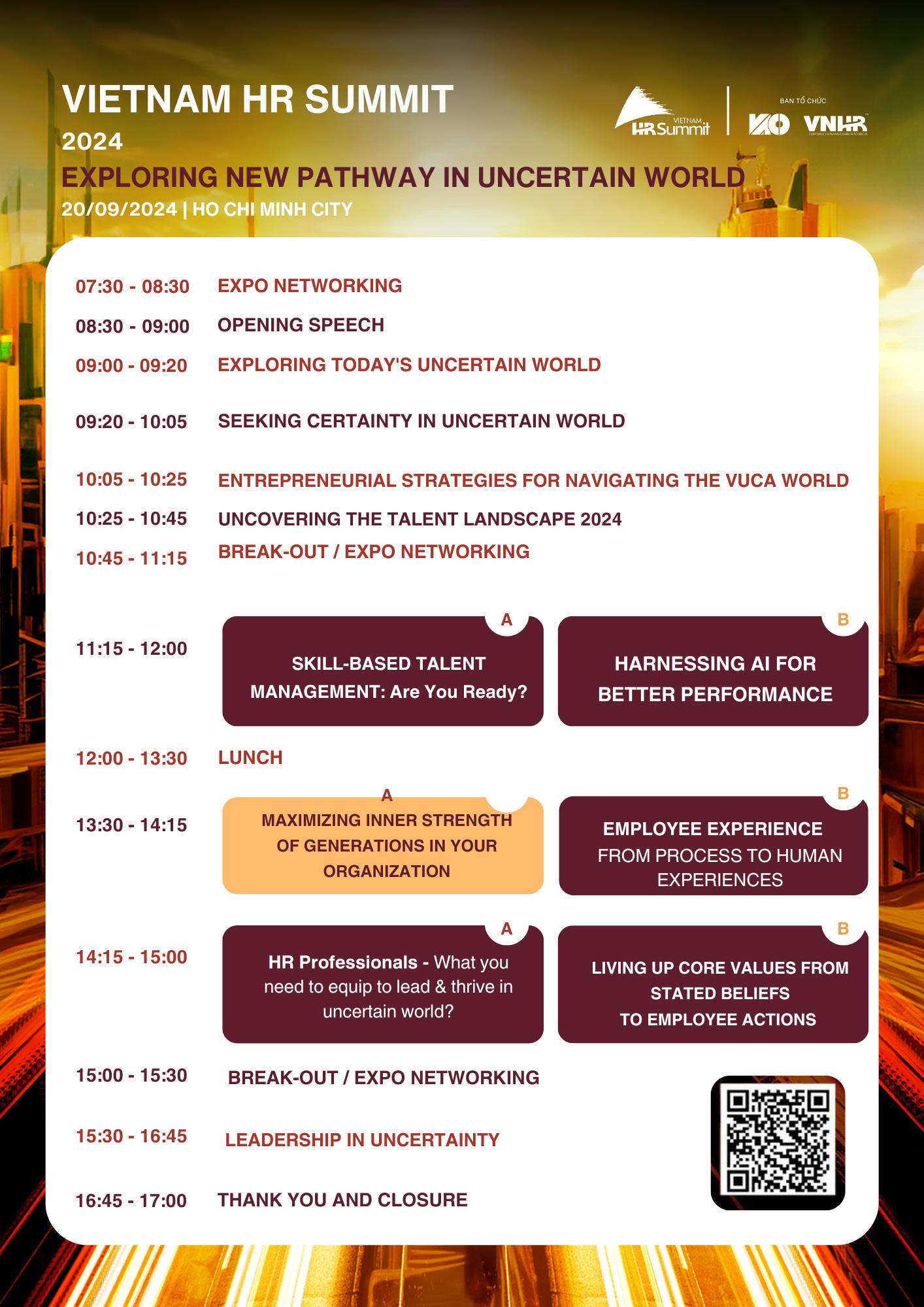
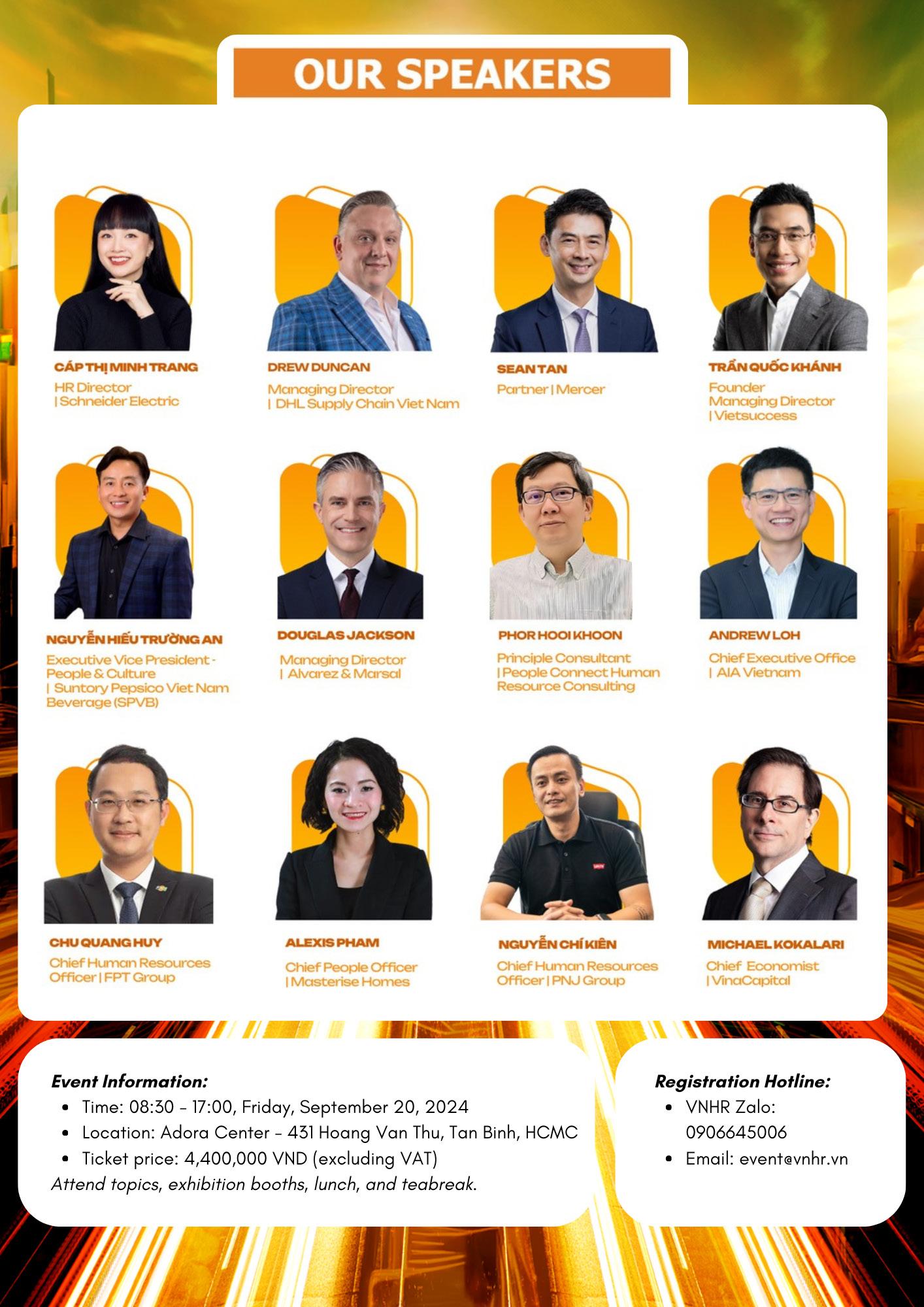
The relationship between employee wellbeing and workplace performance has never been more critical to understand. As organisations evolve, the emphasis on mental health is becoming a cornerstone of effective management. Organisations that ignore mental and emotional wellbeing of their employees risk not only diminishing productivity but also fostering an environment that can lead to burnout, high turnover, and disengagement.
The urgency of addressing mental health in the workplace is particularly evident in Singapore, where the workforce is grappling with a persistent burnout crisis. According to the 2024 Wellness at Work Report by Employment Hero, 61% of employees in Singapore still feel burnt out, a figure only marginally improved from 2022.
A significant portion of the workforce lacks access to essential services such as on-site health assessments, mental health support, and comprehensive benefits management. Only 45% of employees reported that their employer provides access to confidential counselling. The situation is especially dire for Gen Z employees, 68% of whom reporting experiencing burnout, followed by Millennials at 65%.
BY JOSEPHINE TAN

A more holistic approach to performance management involves integrating mental health and wellbeing into the evaluation process. This shift requires organisations to promote open communication, encouraging employees to discuss their mental health without fear of stigma.
Managers should be trained to have regular check-ins that go beyond task-related discussions, focusing also on how employees are coping with their workload and personal challenges. Providing access to mental health resources, such as counselling services and wellness programmes, is another critical step. These resources should be readily available and clearly communicated to all employees, ensuring that support is accessible when needed.

The economic impact of mental health issues can be staggering. The World Health Organization estimates that depression and anxiety alone cost the global economy US$1 trillion in lost productivity each year. This figure underscores the importance of incorporating mental health into the broader performance management framework. Employees who struggle with mental health issues often experience reduced motivation, which, in turn, can affect their work quality and overall contribution to the organisation. On the other hand, organisations that prioritise mental health report increased employee satisfaction, lower turnover rates, and a more engaged workforce.
Traditional performance management systems have typically focused on measurable outcomes like sales targets, project completion, and productivity levels. While these metrics are essential, they offer only a partial view of an employee’s performance. For instance, an employee who consistently meets or exceeds their targets might still be struggling with underlying stress or anxiety that, if left unaddressed, could lead to burnout. This narrow focus fails to account for the wellbeing of the employee, which is integral to sustained performance and job satisfaction.
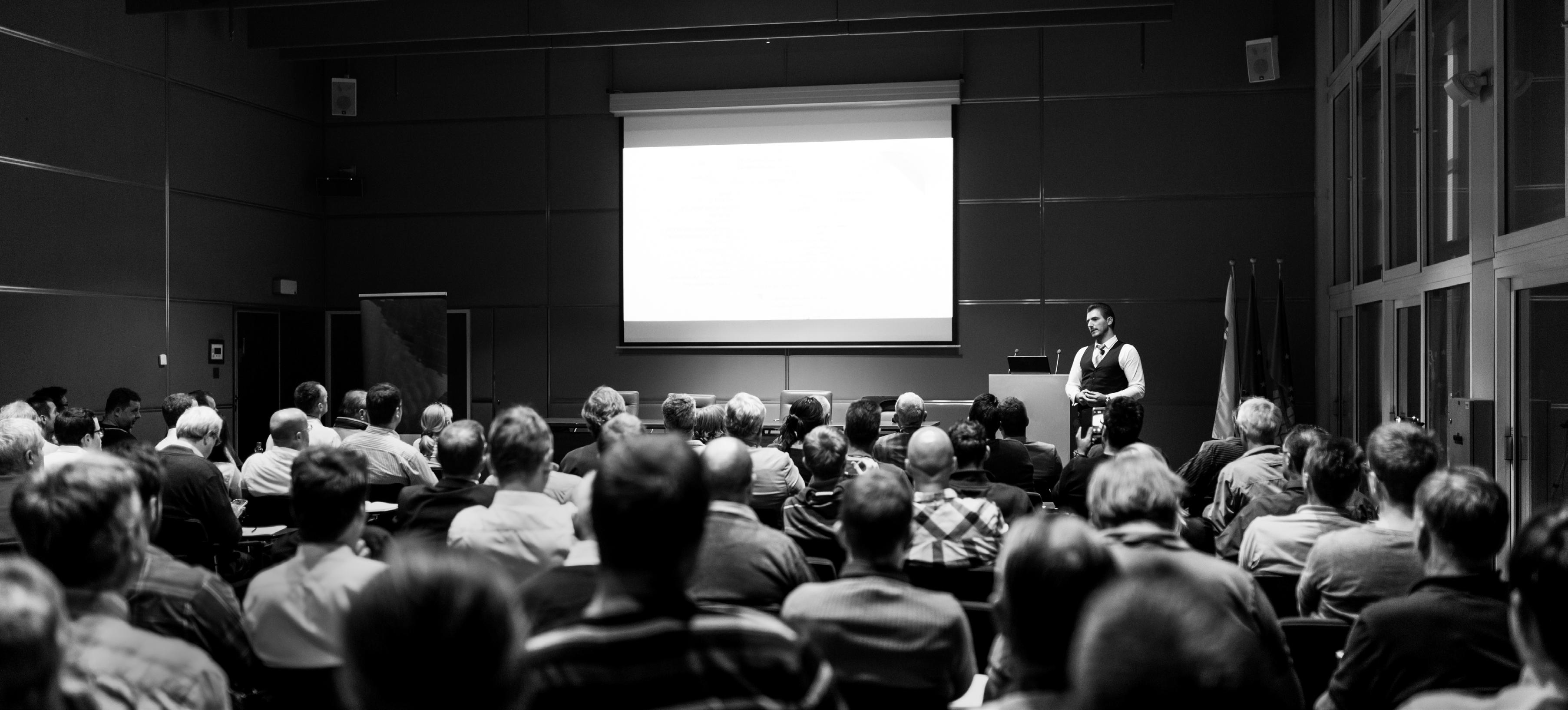
During performance reviews, it is vital for managers to assess not only an employee’s accomplishments but also their overall wellbeing. Conversations around work-life balance, stress management, and personal challenges can reveal areas where additional support might be necessary. By taking these factors into account, organisations can make informed decisions that support the long-term health and performance of their employees.
Flexibility is also a key in supporting mental health. Recoginising that each employee’s needs are different, offering options such as remote work or flexible hours can significantly reduce stress and improve overall wellbeing. Training managers to recognise signs of mental health struggles and equipping them with strategies to support their teams are also essential components of a comprehensive performance management system.
Integrating mental health and wellbeing into performance management is not just a compassionate move—it is a strategic necessity for modern organisations. By addressing these factors, organisations can unlock the full potential of their workforce. Employees who feel genuinely supported in their roles are more likely to bring their best selves to work, leading to sustained productivity, creativity, and innovation. This proactive approach not only reduces the risk of burnout and turnover but also cultivates a resilient, adaptable workforce.
Ultimately, prioritising mental health within performance management fosters a culture of trust and inclusivity, where employees are not just seen as resources but as vital contributors to the organisation’s success.


CHRO PHILIPPINES
12 FEB 2025, MANILA
CHRO VIETNAM
19 MAR 2025, HO CHI MINH
CHRO INDONESIA
11 JUN 2025, JAKARTA
CHRO MALAYSIA
16 JUL 2025, KUALA LUMPUR
CHRO THAILAND
27 AUG 2025, BANGKOK

CHRO HONG KONG
17 SEP 2025, HONG KONG
ABOUT
The CHRO Series is a premier platform for HR leaders in Southeast Asia to connect and exchange insights on the latest HR trends. Through one-day events in various countries, it provides an opportunity for face-to-face discussions, showcasing innovative solutions, and fostering connections among HR peers.
CHRO SINGAPORE
OCT 2025,
